Text
Future Goals
For the upcoming deadline at Wednesday 15th of May, 2020. I have couple more things to experiment with and refine, ready for the submission.
Goals for the deadline
-Critical Rationale (1000 words)
-Digital PDF of the publication= I want to experiment more with the design aspects of it as I continuously aim to get feedback from my tutors on the design and as well as sequencing.
-A final explanation of your publication, research and evaluation= I have few other competitions to enter, I aim to enter some soon and will evaluate on this
-All final images HR & WR in a zip folder
-Any extra work made during isolation (Don’t forget this can be short but it needs to be explained, researched, planed, evaluated etc.) = Further experiments which could perhaps relate to the project. Archival images? Experiment with prints? Post editing change?
I have more plans and aims for the upcoming submission which could help further refine my project. I want to focus on evaluating, refining photo book, experimenting with the final images to refine sequencing as well as the aesthetic of it, etc to improve the work.
0 notes
Text
Digital Exhibition Plan
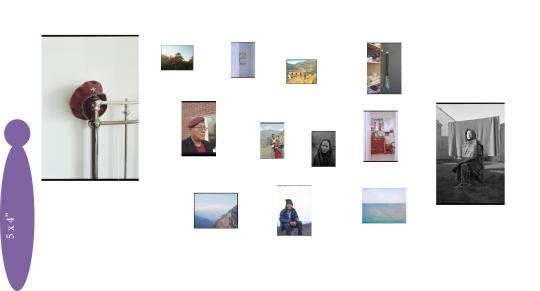
For my digital exhibition plan, here is my first experiment. With regards to the rough layout that I shown in the previous post of ‘exhibition plan’. With minor adjustments, I created this mock up exhibition. I think the layout suits the project well with the two strong image being scaled up to convey it’s importance and subject matter.
The figure on the left (see img above) is your standard eye level viewing guide. The layout includes my strongest images in terms of narrative which was previously discussed in a previous post. The biggest size is A1 which is the image of the “Gurkhat Beret” which is the main inspiration for the project, it introduces and dictates the flow of the work. It provides enigmatic introduction to the project and perhaps a summary.
I chose the portrait of my mother to be big as well, to A2 as she’s another big influence in the work. The portrait also conveys her dominance over the layout, she balances the layout, providing a strong framework of exploration of my mother’s identity which is essentially my identity as well.
I chose the landscape and still images on the top with a non linear narrative which I thought provided a further insight to the project whilst also supporting the work with a bit more context.
The set of images on the middle worked well with the same prominent figures appearing. It depicts my family and the togetherness, whilst also showcasing our culture and belief as well.
The bottom set of images has a linear narrative where it starts from Nepal to UK, with my portrait of granddad influencing the migration and the project.
Overall I think the layout is strong, it gives you a strong insight and a clear sense of narrative and themes with the choice. Whilst not showing too much, it manages to convey enough for the story to settle and to be taken in.
Further Refinement
I want to experiment more with this in the future as I have few changes that I want to make. For example, I want to re experiment with the spatial relationship between the prints to add further separation and to add more positive space around the layout as I think currently is quite tight, it doesn’t settle in effectively. I also want to condense the work down to about 10 or perhaps less images for the layout as I think it would be more straightforward. I have my strong images, I think it would work as the stronger images are effective enough to convey the narrative with a clearer message whilst also being interpretative. I’m thinking perhaps taking the image of my granddad out which will make the work solely about my mother and father which could work more effectively.
These are the current ideas that I have in my mind to refine the work. Hopefully the audience can understand and hopefully understand the work from their perspective.
0 notes
Text
Industry / Audience
This project is quite personal, the point of sharing this work by entering competitions or various other submissions is key for the project. To only share the story but share a perspective from a Nepalese British person which is rarely seen in the industry. It’s a very competitive industry to be in. I think I have my own characteristic, as an outsider which helps me to stand out. My work is diaristic and it comes straight from my own personal experiences. In my projects, I aim to evoke a sense of understanding and vulnerability, in which I hope my audience can understand and experience. Photography helps us to share our experiences through life, through hardships, through failures, through success. It helps us to feel close to our life, we feel connected to it. We understand a historical document intellectually, but we understand a human document emotionally.
My audience are people who enjoy art and photography. I like to think that my work covers not just photography but everything in between. Photography like many other visual arts is a medium where it seems to summarise an idea but it rather re-creates and compiles ideas onto a singular frame. Photography is a way to inform and share experiences.
Overall, I am interested in the way we look at things, and particularly the way in which our perceptions shape the way we view our everyday surroundings. As humans we inherit our way of thinking from the past and tend to have trouble looking beyond what is in front of us. I'm merely trying to refocus our feelings and emotions to the everyday. Photography for me is this journey of finding sense of the world through my personal experiences and feelings. I like to think and see myself as a stranger, an outsider to all of my projects. Almost like an alien, which I think it's a great critical position to be in. Everything is new to the eye, it's a good starting point to be in as you're in this meditative state of mind where you are open to see more and new things. As things become more familiar, it becomes increasingly difficult to look at things with a critical eye. In most of my projects, I'm nearly always an outsider trying to look in or understand different ideals, photography simply becomes a social tool for me to engage in that exploration. Photography is my response to my life.
0 notes
Text
Exhibition Plan
Previous Semester
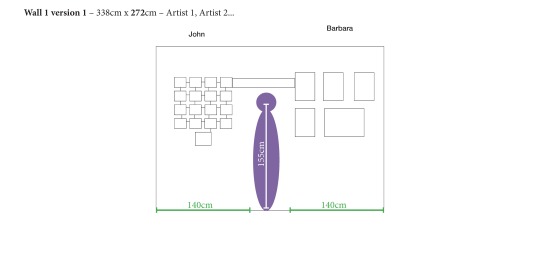
Although this has been explored in my post in the ‘inspiration’ section of the blog. I wanted to get started with my exhibition plan by talking about my previous experience where I used In Design to design my space for the exhibition using the correct dimensions and the requirements of the gallery space.
It was a quite a process in selecting work that worked well together to create a strong narrative for the project. I used a grid of small A5 prints of suitable selection of images that worked well through a consistent aesthetic. The use of small size worked well. I also used a participatory element (postcards) adds a fun and engaging spin as the question about one's favourite holiday destination is at odds with the presented images of Hatfield. I also placed my photograph on a plinth to add further interest in the project. This wasn’t just done over night, through various research and edits (see post in the ‘inspiration’ section of the blog) to get the final look of the project ready for the exhibition.
Key Elements for an Exhibition
In this section, I want to talk about the key elements for an effective show. You should have a body of work with a consistent theme rather than being a collection of random images that don't fit together. I have a project with a theme ready, although the project has black and white images as well as polaroids and various other aesthetics images, they all have a running theme that ties the work together.
Curating the images
It’s very important how much you space you have to exhibit, then you can plan your work around the dimensions. Now, it’s the challenging part, selecting images.
For the project above, I had a collection of 100+ images, I had 1.4m of space to work. I didn’t want to clutter the work as I thought it would detract the work hence I opted for a grid layout which informs the viewer the standard and the uniformal sense of the project which it self is a deadpan view. I exhibited 16 images of 100+ images. I had the A5 size in mind which helped to design for the show.
Promoting it online and offline
Although as a class we promoted our online (our social media) and offline (fliers / zine). Looking back, I don’t think it was enough. The exhibition was at a quiet place despite being in London. We spent a lot of time in planning for the exhibition that we didn’t take the time to promote and market the exhibition as effectively we should have which would’ve helped with the turnout. We didn’t use the local shops / community centre to promote, neither did we look for options online.
We also didn’t enter any competitions or open calls, we missed out in this key opportunity as there are plenty of organisations that help promote University student’s work. I didn’t do this previously hence I missed out on getting exposure to my work. However, in this semester, I have made this my goal.
Previous Ideas
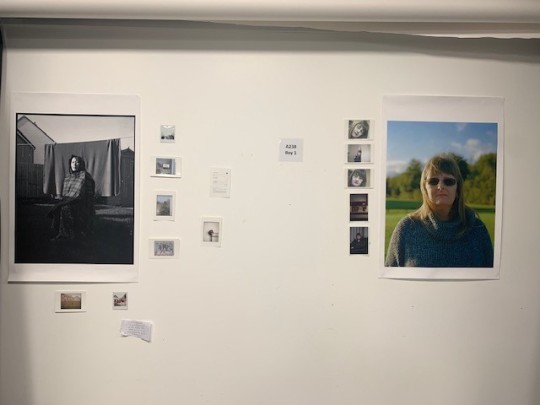
Through out the previous semester, I had a theme running in terms of exhibiting my work.
-’Random’ placements of images on the wall= Mimicking the appearance of a workspace or a personal wall, the scarcity of the images suggests variety of themes and subject matter
-Varied in size and scale of the prints= This gives importance to various subject matter in images.
The idea was to have my images disperse on the wall which hints at my identity which is so scarce itself with no clear beginning or ending. “I’m a queer mixture of east and the west, out of place everywhere, at home nowhere.”
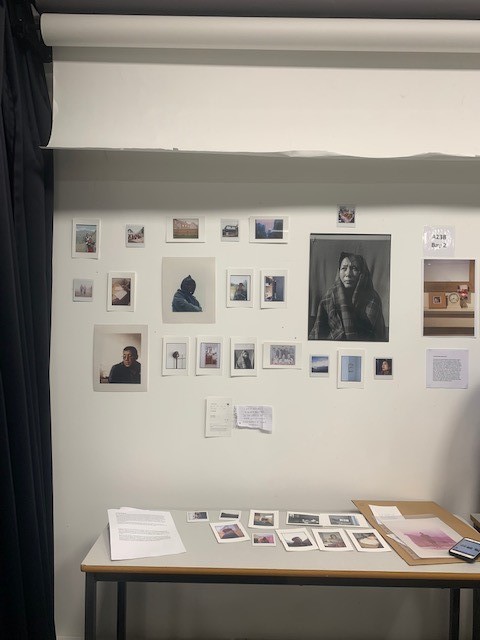
For the print options, I always had this idea of having various prints from darkroom, inkjet, C-type, polaroids as well as texts. It’s this rough look that still entices me as that’s what the project is about. This raw, introspective exploration of identity and scarcity of it.
Influence
Wolfgang Tillmans has an influential figure to me in terms of exhibiting work. His method of using prints without usage of frames or any other materials that ‘inform’ you that it’s a special image. He simply uses his images using minimal technique, whilst he experiments with scale as well texture of the prints.
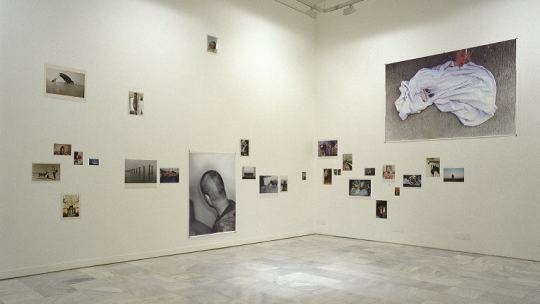
Tillmans's images in exhibitions are casual seeming in both their subject matter and their dispensation around the walls: some small, some large, some close together in linear runs, some mounted high up, low down and, occasionally, printed large and given solitary prominence.
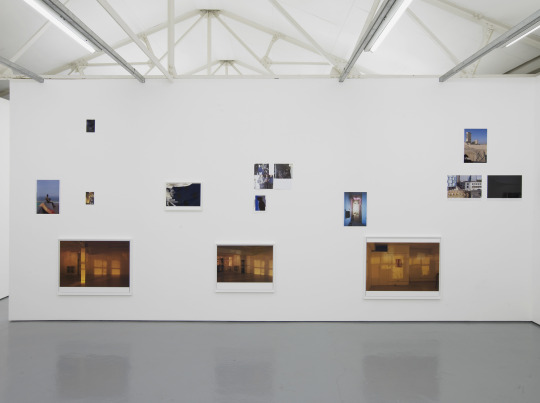
It’s compatible to that of magazine layouts; some people made reference to teenage bedroom walls, which, in the seemingly ad hoc positioning, the shifts between genres and the inclusion of portraits of friends and the occasional music or fashion celebrity, also seemed pertinent.
The spatial relationship is key in his work as he uses negative space to surround his large / small images, sometimes they are cluttered, others are not suggesting the relationship. The method replicates our working space where each print stand out against the spacious white wall. The subject matter is also dispersed amongst the wall as Tillmans makes connection between the detail of his lives to give them an aesthetic and often emotional presence which is something Tillmans intends to share.
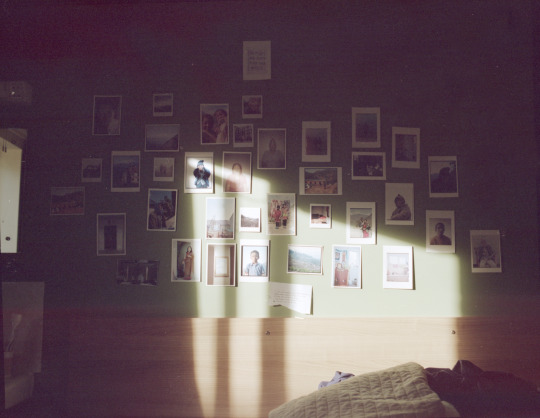
My room
I have experimented with a more tighter approach than a spacious take. Although it appears and feels ‘ amateurish’, I think it adds to the narrative to the project, it seems unfinished and still under working process which is exactly what my identity is, it’s a working process. The ‘raw’ images on the wall becomes something else, it’s almost journal like, maybe more perhaps a working sketchbook.
Inspiration II
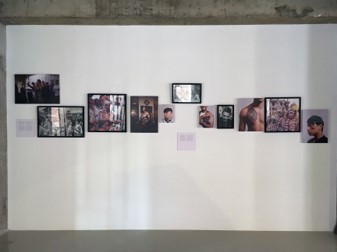
Nina Manandhar has been a big influence in my project which I explored in the previous semester. The exhibition show depicts an editorial like photo story where it conveys a narrative about the Nepalese identity. The dispersed images on the wall with a row of images work well as a documentary editorial project where the layout is informative and cohesive. The work highlights themes of kinship, fraternity, belonging, collective cultural expression and masculinity. With Manandhar being Nepalese as her father is from Nepal, she uses her camera not only as a tool to explore her environment but also to develop projects which depict dual heritage identity as informed by her own. The resulting body work, functions as part anthropological enquiry and part personal story from her point of view of a mixed-race British Nepali women who has grown up as an insider/outsider to the Nepali community in the UK. Her particular interest in the young males nods to the imagined setting of her father in the UK- a hint at his life as a young man and his journey settling in London, but also her own identity as British Nepali.
Experimentation

Prior to Covid 19, the above was a rough plan for the exhibition. The layout is a result of lots of experiments in the past. I wanted to have two huge prints instead of one to highlight certain subject matter in the layout as I thought having just one huge print will have lots of influence on the other small prints. By having two huge prints, I can base the small, supplementary images to the project. It has a playful appeal to it, which works well to place importance on each print. I wanted to experiment with the spatial relationship between the prints as they have various subject matter from landscapes, still life to portraits. With care and thought behind it, it can mix well together to create a sense of cohesiveness to the project.
Core Idea
Similar to the photo book idea, I want the exhibition to have a feel of “family photo” type of images but with a fine art approach, where the layout or having “rough” prints suggest otherwise with experiments on the scale and the spatial relationship between the prints. I think having this "look” work for the project as it seems to take in lots of ideas and explores them lightly. As a result, the work appears to pull in to the work but with distance, and with distance, instil a connection.
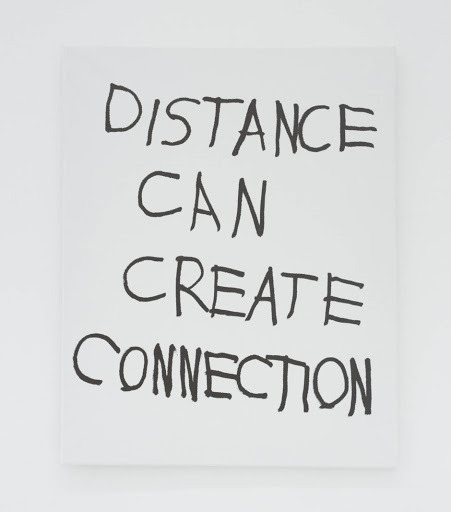
Jim Joe
As a result, the photographs looks at the present world with distance, and with this distance, instil a sense of amazement. The camera is an eye and is utilised as an instrument of perception which examines the self and the external world and in doing so, provides visual expression to concepts of reality. The landscapes, still life and portraits become a container for this memory. Creating this work, interacting and reflecting upon my identity is a reminder that at some point I was in that moment, it now acts as a portal.
At the core of it, it’s much about me and my life, what has been and what is. I think the viewers can somewhat understand the themes of the project and hopefully understand where I’m coming from. The work informs and shares the perspective of someone who’s unknown and the identity is also somewhat underrepresented in society. Although the work is filtered through own experiences of growing up in Nepal and Nepal. These photographs express my personal nostalgia for a long past period of my life and the places of my childhood. I believe that they also inspire feelings of nostalgia in many of the people who view them who might have grown up in a similar way. Perhaps it may stimulate embodied memories of some who might have shared some experiences of place and people that I have experienced in this project.
Essentially, the prints takes photography literally. “We are all frightened by time and the way it moves on, and the way things disappear. That’s why we are photographers. We are preservationists by nature. We take pictures to stop time, to commit moments to eternity. Human nature made tangible.”
Reference
Jobey, L. (2010). Wolfgang Tillmans: the lightness of being. The Guardian. [online] 25 Jun. Available at: https://www.theguardian.com/artanddesign/2010/jun/26/wolfgang-tillmans-serpentine-photographs-exhibition [Accessed 21 Apr. 2020]
artnet News. (2020). “Record-Keeping Is Never Neutral”: Wolfgang Tillmans on How Photography Can Be Used as a Potent Political Tool for Change. [online] Available at: https://news.artnet.com/art-world/wolfgang-tillmans-interview-brussels-1798353 [Accessed 21 Apr. 2020].
0 notes
Text
PDF- Design
Upon my experiments with Miro, I wanted to get feedback from my sequence of photographs. For this, I made a PDF using Adobe In-design to create the work. I think a PDF is a great way in showcasing your work. I wanted the PDF quite minimal in the sense of design, I wanted to create design that was minimal yet contemporary and complimentary to the work. As I wanted to present this work to my tutors, I had this idea of adding the mini interview that I have created previously. Since some of my tutors haven’t been introduced to the work, I wanted to create a PDF with an interview playbook to introduce the tutors to the project where they can understand my intentions behind the project as well get insight on the work.
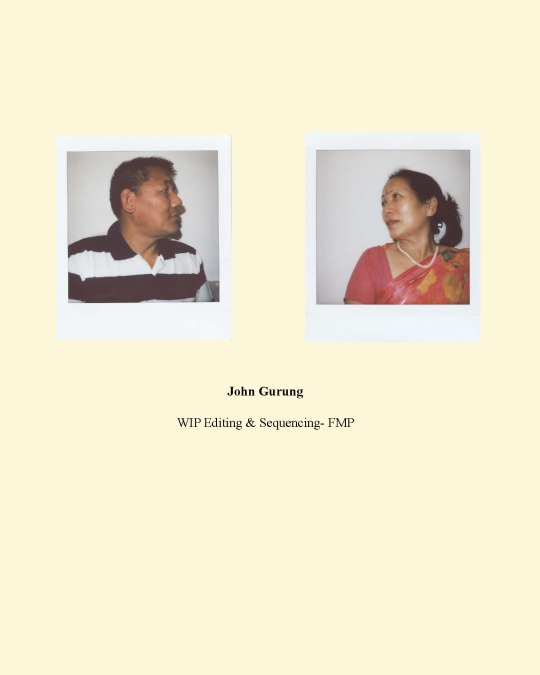
Intro Page- As previously mentioned in my ‘inspiration’ section of the blog. To compliment the project, I opted to go for a creative, contemporary design to the PDF where I use various colours to accentuate writing in the work as well as to make the work more playful which adds to the non-linear narrative. For the intro, I used the Polaroids which I think conveyed a sense of playfulness, suggesting a light-hearted story.

For the second page, I introduced the project, I also added the key words which I thought would help the tutors understand the key themes in the project.
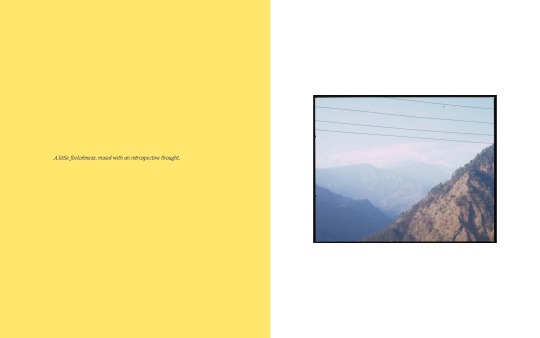
A fun little text to start of the sequence.
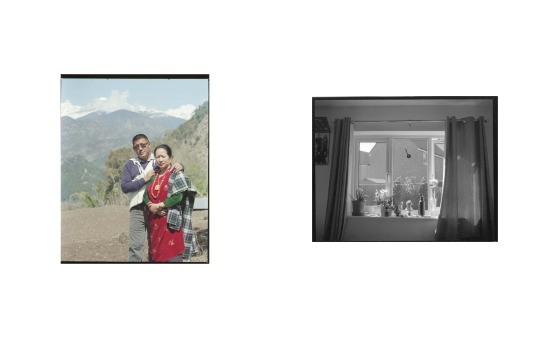

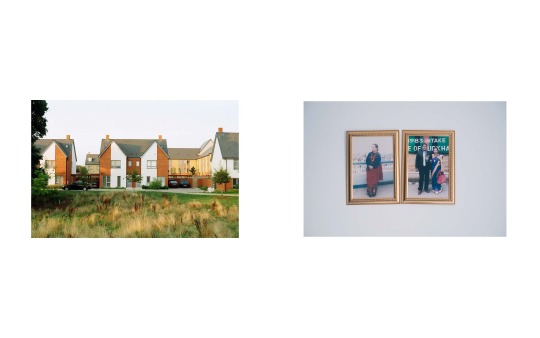
The sequence has strong photographs that are supported my supplementary images that helps add contexts to the narrative. For example, the black and white image above is sequenced with images of the landscape and houses, they help tell the narrative, acting as supportive characters in a movie.
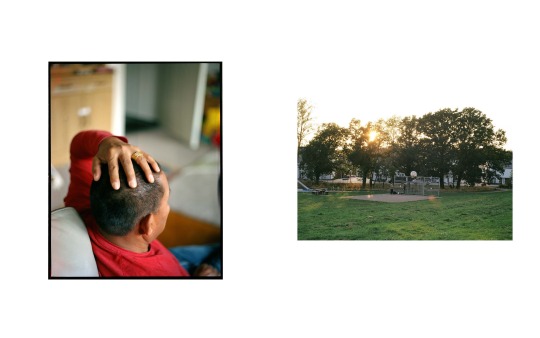
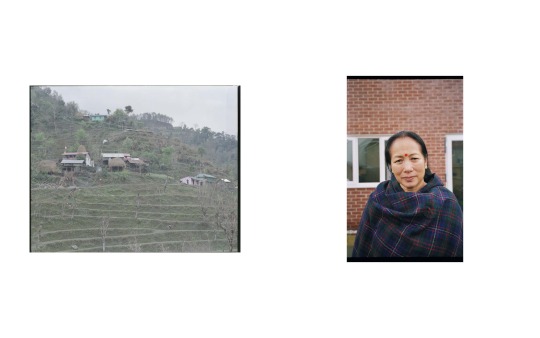
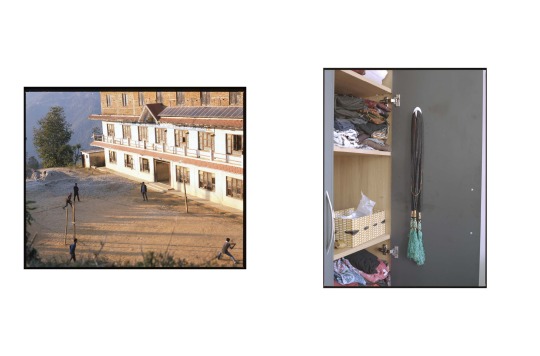

With about 7 pages in to the sequencing from the first set of photograph, I added parts of my interview to help the narrative of the project.
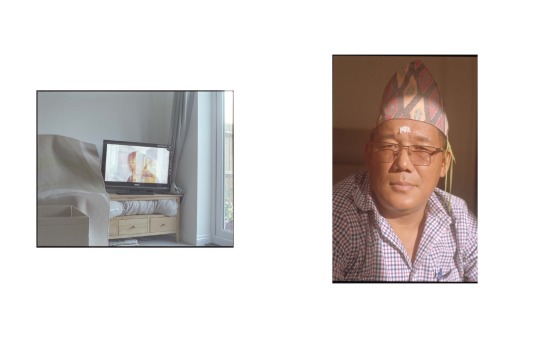
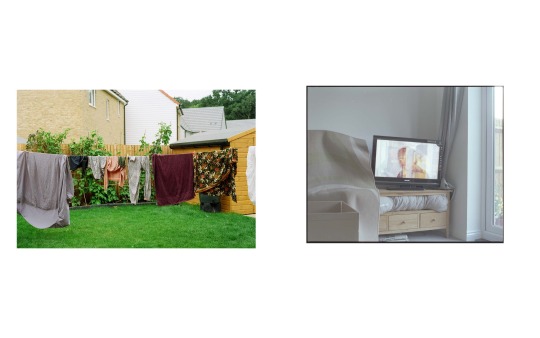

The tone of the sequence are sometimes placed together such as the sequence above and below depicts with their warm tones and soft pallete. Not only, they work together well, they compliment with each other effectively to add to the narrative.

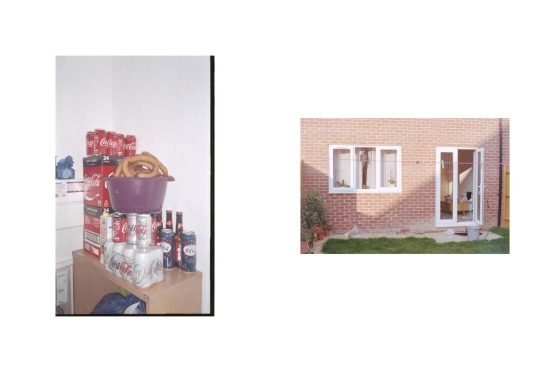
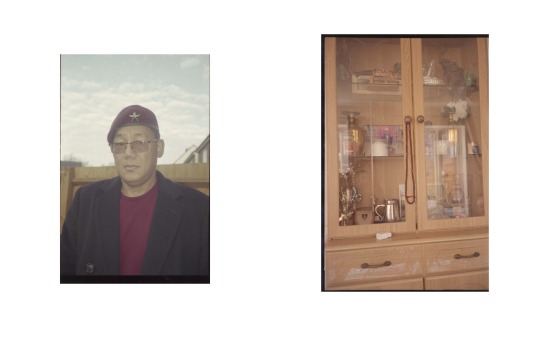
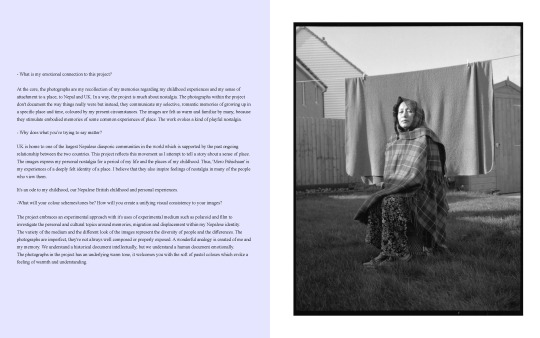
The image alongside the interview, I picked strong images that helped convey the narrative of the project effectively so that the tutors can get context from the interview and then transfer their knowledge onto the image next to it to help understand the project.
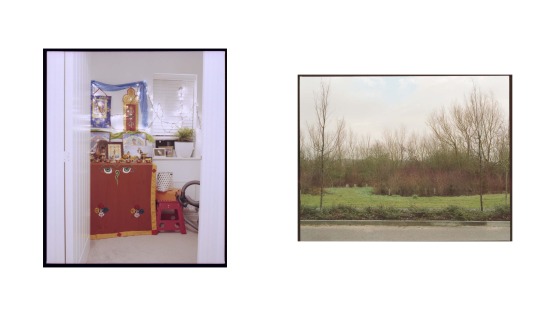
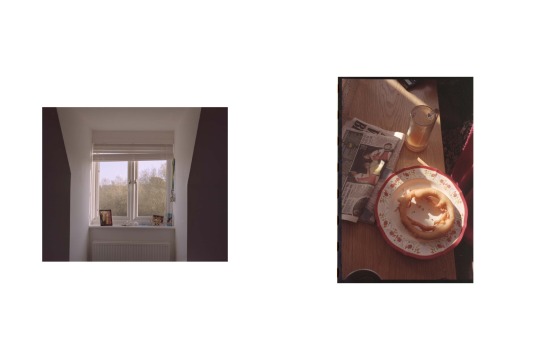
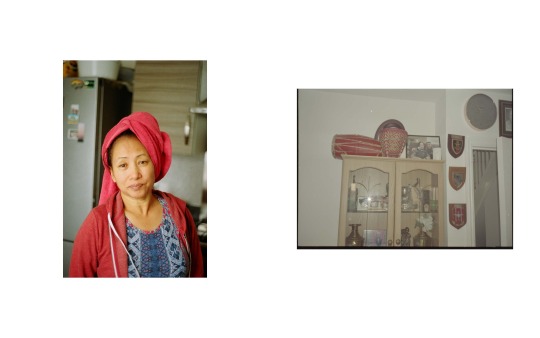
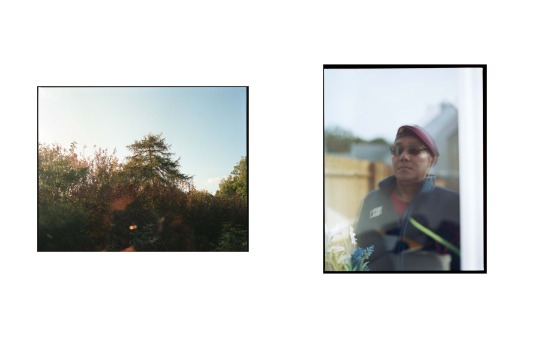
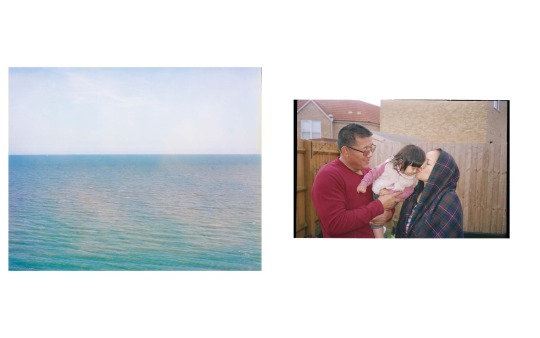
The second half of the PDF becomes quite reflective in the sense that it mostly focuses on images that’s shot in UK to help convey the narrative of migration.



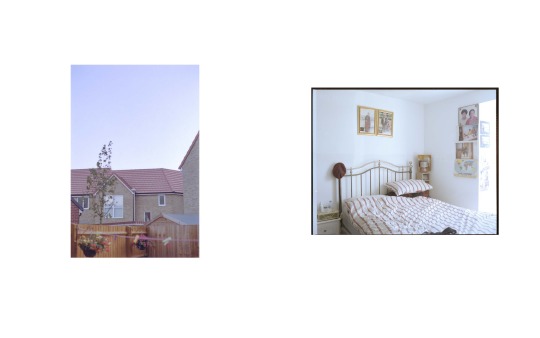
The sequencing here has started to become more reflective through the images with images of objects and landscapes.
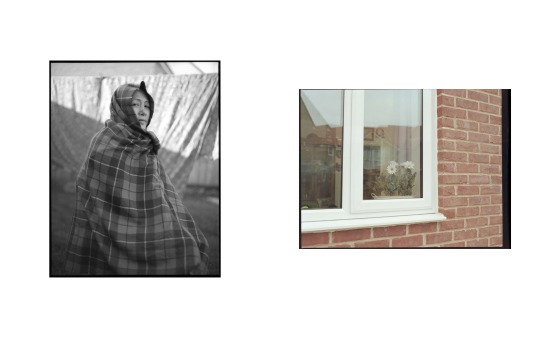
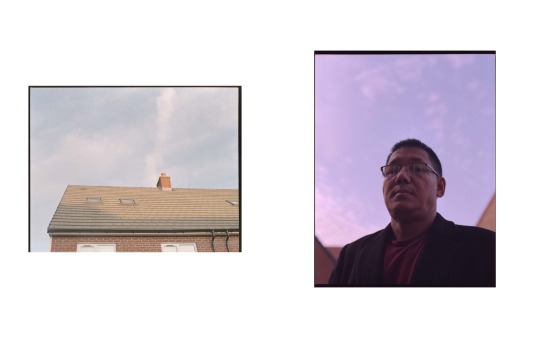
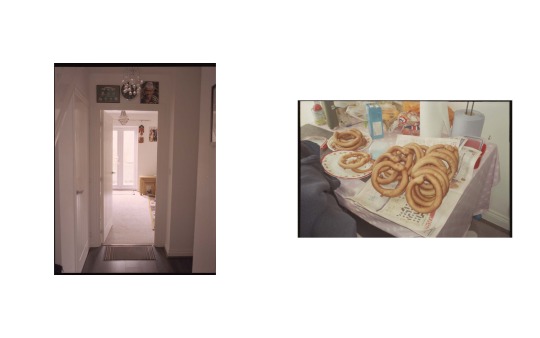
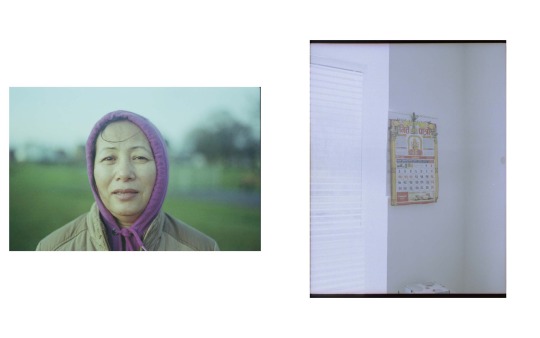

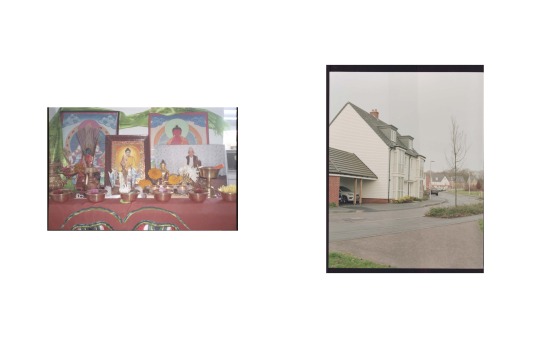
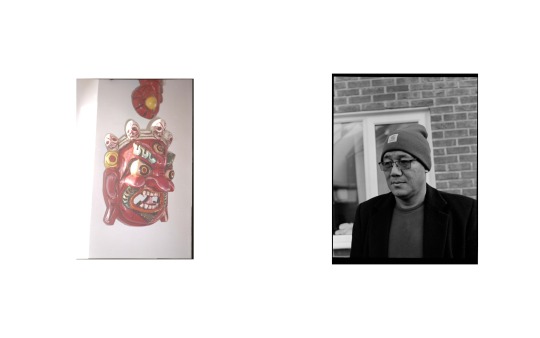
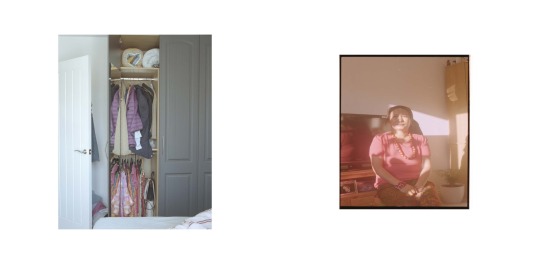

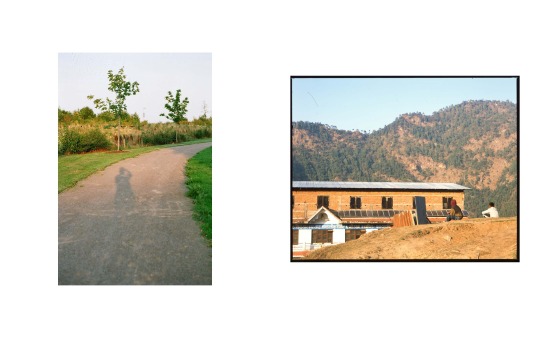
Towards the end of sequencing, I wanted to add pieces of myself where it hints of my journey and sort of ‘conclusion’ of my identity, hence I used the images above.
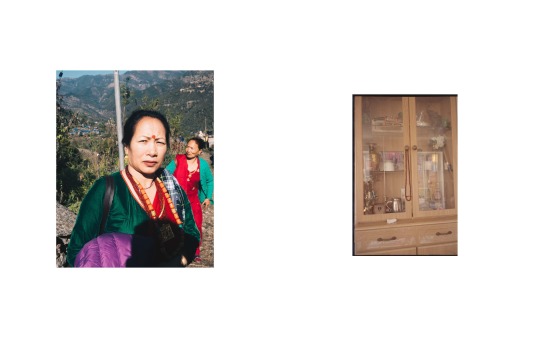

I think by using the image above leaves the viewer with quite open interpretation as you can’t see the subjects clearly, you can sort of assume the women figure to be my mother which is frequently seen in the work but it’s hard to work out the person next to her. Could it be the author? Could it be you? “I can’t see him” These questions are what I want the viewers to ask themselves and come with their own preparations, come up with their own narrative of the project.
Personal Intake
I think this is a good starting point as an introductory work, the interview has really helped to add the narrative to the project. One thing to take away is that I think I have added lots of images in the project, it feels quite long, you start to lose interest in the second half. The PDF has 38 pages and has about 80 images which quite a lot to take in as a introductory PDF. In the future, I want to condense this edits to help convey the narrative whilst also making the audience to seek more, rather than to give everything.
-Use of Polaroids= These bring personality and adds a personal touch to the project, they are hard to observe and dissect since they are small and are lower in quality. Despite this, through the use of the Polaroids, it helps convey the personal story of the project.
-Small photographs= I didn’t want the images to be strong, I didn’t opt to go for a full bleed or a place a huge image. I wanted to the viewers to observe and truly see the image as it is, whilst not being attracted by the detail or design of the image.
-Way of sequencing= This project has a light-hearted narrative on self- identity, it also draws various other themes in the work which works well with the narrative. Whilst some of the images work together, I don’t think most of them pack a punch. In future experiments, I want to play around with the sequence, pairing different images with each other as well, condensing the images to smaller quantity to convey the narrative more effectively.
Overall it was a fun experiment, I have received constructive feedback to refine the project which I will experiment with in future posts.
0 notes
Text
Mini Interview
To get better insight and to really explore the project through the means of asking myself questions and my motivation towards the project can be therapeutic yet informative. I have made some sets of questions for myself which can been seen as ways to talk more about the work and talk about things that I have been doing unconsciously, this is where I confront these topics and answer genuinely.
Background of ‘Mero Pahichaan’ Project
I want to explore my personal experience in relation to my Nepalese identity. My work is quite personal as I explore various themes of identity, isolation and belonging, my wok is simple a response to that. I re-examine this notion of having an Asian identity and the feeling of being distant in terms of linking to your heritage.
Photography is a universal language to me that I want to access and to talk back to the world.
-Title of the project, what does it mean?
‘Mero Pahichaan’
It translates to ‘my identity’, the title is Nepalse which is romanized in English, this is something that I play around with my captions as well. I wanted the title to be informative yet informative. The title hints at a familiarity yet is not English, it refers to completely different language and meaning which is a representative theme of my project.
Also in the captions and the work, not only the photographs are autobiographical in the sense of interpreting a sense of own experiences in the pictorial narrative sense but they are also accompanied by autobiographical titles and paratexts by myself.
-What is the project about? / Project synopsis
This project focuses on my fading Nepalese identity. I'm a British Citizen who has lived in the UK for nearly 14 years now. Despite having lived in the UK more than I have in Nepal, I still feel a strong sense of belonging in Nepal. This underlying theme urges me to rekindle my relationship with Nepal and it’s rich culture. Using my camera as a tool that functions as part anthropological enquiry and part personal story from my depleting Nepalese identity to explore intimacy, distance and often tensions between my torn identity. The project attempts to manifest a sense of attachment to my Nepalese identity but also comprehends my separation from it.
-What do you want to say?
I simply explore my family and how our relationship, memories and bodies are intertwined. The project is very intimate, in which it underscores the closeness and the bond of my family as well as my vulnerable identity. Although deeply personal, the work welcomes you into it's confused world, evoking a sense of understanding and vulnerability. This is fuelled by my own experience of seeing which is in this peculiar mix of both eastern and western culture.
- Why do I want to tell this story?
This project is a very personal story, it's my journey so far as I confront my identity and heritage. The overarching feeling is of an outsider yet an insider, who's a queer mixture of the east and the west, out of place everywhere. Photography for me, contributes to a collective space that creates conditions of citizenship and participation. Through this, an ongoing dialogue opens between the project and the audience where their own experiences of growing up and dwelling within the region are introduced. Although, it's a personal story, there are some universal themes of having a sense of belonging and questioning of identity that resonates with everyone.
- What is my emotional connection to this project?
At the core, the photographs are my recollection of my memories regarding my childhood experiences and my sense of attachment to a place, to Nepal and UK. In a way, the project is much about nostalgia. The photographs within the project don't document the way things really were but instead, they communicate my selective, romantic memories of growing up in a specific place and time, coloured by my present circumstances. The images are felt as warm and familiar by many, because they stimulate embodied memories of some common experiences of place. The work evokes a kind of playful nostalgia.
-Project promotional PDF & industry audience
UK is home to one of the largest Nepalese diasporic communities in the world which is supported by the past ongoing relationship between the two countries. This project reflects this movement as I attempt to tell a story about a sense of place. The images express my personal nostalgia for a period of my life and the places of my childhood. Thus, 'Mero Pahichaan' are my experiences of a deeply felt identity of a place. I believe that they also inspire feelings of nostalgia in many of the people who view them.
It's an ode to my childhood, our Nepalese British childhood and personal experiences.
-What will your colour schemes/tones be? How will you create a unifying visual consistency to your images?
The project embraces an experimental approach with it's uses of experimental medium such as polaroid and film to investigate the personal and cultural topics around memories, migration and displacement within my Nepalese identity. The variety of the medium and the different look of the images represent the diversity of people and the differences. The photographs are imperfect, they're not always well composed or properly exposed. A wonderful analogy is created of me and my memory. We understand a historical document intellectually, but we understand a human document emotionally.
The photographs in the project has an underlying warm tone, it welcomes you with the soft of pastel colours which evoke a feeling of warmth and understanding.
Key Words
Identity, exploration, lost, confusion, intimacy, vulnerability, relationship, isolation, nostalgia, attachment, separation, culture, citizen, sentimental, memory, heritage,
A little foolishness mixed with an introspective thought.
-Talk about your technical mishaps in the project / Stylistic choices
There are some 'technical mishaps' such as colour cast, wonky film borders, inaccurate exposures, crop factor, etc. All of these 'mishaps' works with the project. You are reminded almost every time that you are looking at a photograph, each photograph has their own character. You are looking at an experience, my experience. Those experiences might be hazy, unclear or inaccurate, but they embody my fading identity.
- Fragments of Nepal in UK
Initially, I photographed remnants of the Nepalese culture in my home at UK. Personally, I don’t have much personal objects that links to my cultural heritage, but my parents do. My house at UK has lots of personal objects and strong attachment to Nepal such as the cultural clothing, food, religion, etc. Coming back to my family's house almost feels like I'm in Nepal where I am surrounded by the Nepalese culture and people constantly. With this surrounding, I explore the environment, using my camera as a tool that functions as part anthropological enquiry and part personal story from my depleting Nepalese identity.
As well as with objects, I photographed lots of my close family members here in the UK. Some of them are staged and some were in the heat of the moment. The photographs was a result of conversations that I would normally have with my parents regarding my fading Nepalese identity. Sometimes, I photographed my parents in a cultural attire or sometimes, I photographed them in everyday situations in order to get this contrast between their own British & Nepalese identity as they differ to create a strong juxtaposition.
-You feature your family a lot in this project. Was this a conscious decision?
Photographing my family became a way of confronting my confusion about being identity. My parents has always guided and supported me throughout my life, they made me who I am. It made sense to trace back my idea of my identity back to my parents. In this project, I focus on my family and how our relationship, memories and bodies are intertwined.
-Your photographs vary from still life, portraiture and landscapes. What was the reason behind it?
The photographs vary from still life, portraits & landscapes, the series of them are interconnected in terms of their subject matter, a deeper layer of meaning is created in their being set in relation to one another. The work represents the whole experience, the ideas of my Nepalese identity. It's this strong urge to preserve my Nepalese identity that drives me as I attempt to rekindle my relationship. The whole project has been a way of creating a sense of attachment to my Nepalese identity but also my separation from them.
Personal Intake
Answering these questions have been rather challenging, yet it was therapeutic to write. I realised that I wrote some things that I genuinely wouldn’t known if I haven’t asked myself those questions. It’s a great way to get your reasoning behind your work and your motivating behind it. It feels diaristic in the sense that I become quite open and revealing in my answers. I want to explore more of this in the future as this is quite convenient and informative to some people who might not ‘get’ my photographs, the writing can help shape them an understanding of the project and the reasoning behind it. In the future, I wish to use this alongside my photographs to share amongst my peers and tutors to further introduce them to my project as well as to communicate my own personal insight to the project. Writing this has certainly helped me to feel closer and connected to the project.
0 notes
Text
Miro- Sequencing
For my sequencing since I’m not able to print my photographs and show physical due to Covid-19, I have started to ‘Miro’ to help organise and sequence my work. Miro is an online collaborative whiteboard platform. They’ve built a platform for modern work, enabling collocated, distributed, and remote teams to communicate and collaborate across formats, tools, channels, and time zones without the constraints of physical location, meeting space, and whiteboard, perfect for situations such as this.
Miro is free to use, I had to create an account to use which you can create using your google account which I already had. I then simply uploaded all of the photographs that I have shot for the project onto the whiteboard. It’s been such a great help especially for project and portfolio work. It’s an effective way to present your work to someone, or want help to edit down to a core. It can help create discussions with your peers, tutors, editors to find the next step and receive different perspective on the project.
Using Miro has been a great success, especially when I have larger sets of photographs. It’s basically a shared whiteboard where you can also edit with others. For a snappy response and upload, I organised all of my images for the project and resized them to about 1000px long edge.
For my sequencing, I first uploaded all the images of the project. I then organised them into three different aspects, portraits, landscapes, and still life. I then experimented with sequencing with images from each aspects of the project. I kept in mind the book layout, pairing up various images to see which one works best with each other to tell the narrative more effectively. The reasoning behind this is also to tell my personal story through the idea of a photo book.
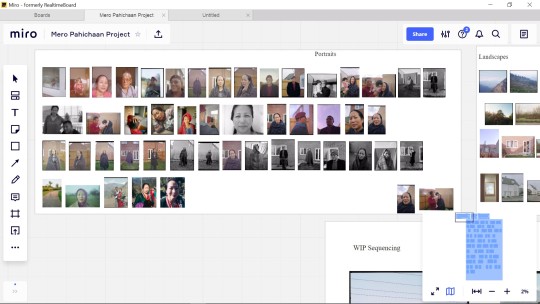
Screenshot of portrait aspects
For organisation reasons, I organised my portraits images to one side. This way I could see all of my portraits, I then simply picked about 10 strong photographs which helped convey the story of the project.

Screenshot of still life aspects
The same with the ‘still life’ aspect. Although this weren't’ as strong as the portraits, I think they added a complimentary support to the project, providing insights and contexts to the narrative.

Screenshot of landscape aspects
I din’t have a lot of landscape images, but it was sufficient as there some couple of strong ones where it helped to provide establishing settings to the project with the images ranging from mountains to seas and to my backyard.
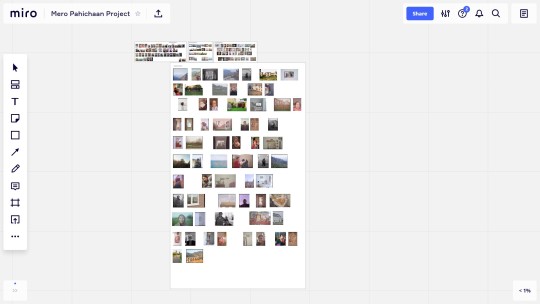
Screenshot of sequence aspect
Upon organising the images of the project, I simply picked the best ones and paired images together which go well together in terms of aesthetics as well as storytelling. It has been challenging to through the work and narrow the images down. I managed to narrow down the work to about perhaps 40 pages, double that, you have about 80 images. I think the set that I have edited down work well together. The motivation behind is this to create a sense of narrative of the project. As I stated in my project statement, I want the flow of the images to convey a personal story about my identity whilst also appearing ‘lost’ which is the key theme in the project. To hint this, I picked pairings and images that jump from various subject matter and colour tones to create a vivid and incoherent sequencing but with cohesive narrative which sounds challenging to conduct. I’m still in the process of editing this further down. It’s a painstaking process.
Although the screenshot above is unclear, I will create a PDF in future post. My aim is also when I create a PDF version of the sequenced work, I will present this PDF to my tutors to get constructive feedback on the work. The project is now in the phase of sequencing and editing, where I experiment with the layout and edits which will directly impact on the narrative of the project.
0 notes
Text
Home / Identity
Home is said to have a very profound of sense of belonging, but I struggle to find what makes it that, this entices me to it. I want to attempt to document my understanding of this home as a strangely place that I am accustomed to. As much as the work is about identity, the work is also about having a sense of belonging, about a homeland. The term is usually associated with a spatial imagination, comfort and security, often accompanied by a domestic material culture. Simultaneously, the home is a perception of society, a national identity, not only a space inhabited by the family, but also the everyday experience of a nation. As a result, the home and the history of a place are meticulously interlinked in the eyes of the people inhabiting a specific piece of land. Through the depiction of a home, through a family especially through my Nepalese British eye, it brings a new perspective to the nation and an unusual space emerges where an individual is also the society.
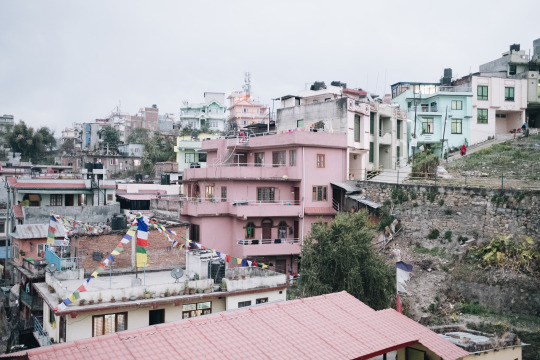
Home represents so many themes and ideas but it’s essentially it’s constructed by a split between cultures and places, one existing everywhere and nowhere. In this project, nostalgia is a heavy theme as it encapsulates a past someone can image to have been a part of. Whilst the home sometimes begins from the place where one was born, in this case, the home has been lost in a distant land. Migration changes the way, one relates to a certain place, it modifies both feelings and attachment. As belonging is no longer a part of an individual or a community rooted in a specific location, but it is instead a place which the individual cherishes and longs for. Moving away from one’s homeland, the photographs in the project distorts the alteration between roots or routes, local and global. Through the adaptation of anthropological and personal methods, by stepping back but also closer one can begin to see the true nature of a place and find elements of home. The project dives in a world between culture, sense of a place and nostalgia in a search of what condenses the Nepalese identity and my separation from it. I stand between the inside and outside, the home and the world that goes beyond it; collecting voyeuristic glimpses of my personal experiences and representation of my Nepalese identity.
The project seems to take in lots of ideas and explores them lightly. At the core of it, it’s much about me and my life, what has been and what is. I think the viewers can somewhat understand the themes of the project and hopefully understand where I’m coming from. The work informs and shares the perspective of someone who’s unknown and the identity is also somewhat underrepresented in society. Although the work is filtered through own experiences of growing up in Nepal and Nepal. It captures a romanticised vision of place conveyed by the feelings they inspire. These photographs express my personal nostalgia for a long past period of my life and the places of my childhood. I believe that they also inspire feelings of nostalgia in many of the people who view them who might have grown up in a similar way. Perhaps it may stimulate embodied memories of some who might have shared some experiences of place and people that I have experienced in this project.
0 notes
Text
Artist / Project Statement Refinement
One of my targets was to improve on writing. I have experimented over the last few days to improve on this matter and to refine my writing ability which accentuates the work. Photography is subjective, it’s ambiguous, it’s the nature of it. One of the ways writing can help is to convey a complimentary piece to your work that the audience might need to understand your work. Otherwise, your work might be misinterpreted. Good writing informs and adds to the work, it shouldn’t detract or lead you to other things, it should be a supplement to your work. Writing has helped me to clarify what my work is about whilst also being a complimentary aid / insight on the project. Another key factor is also to write in an interpretative manner, there shouldn’t be a fixed approach, it should leave your audience open to view the project as they want to interpret it.
Through my previous work, I have some examples that’s a good starting point but I’m looking to refine.
Website Bio
John Gurung is a photographic artist based in South-East, UK. He's currently studying Photography at University of Hertfordshire.
John searches for the ordinary in the extraordinary, exploring his fascination of photographing his curiosity in the world and it's people.
Review- I made this bio last year. It’s quite clear and informative to my occupation and approach to photography. The second half of the statement informs you of my practice, whilst it leaves you for interpretation. I don’t think it’s sufficient enough, it lacks a punch, it’s quite vague.
New Bio
I'm a fine art, documentary photographer based in South East, UK. In my work, I explore the notions of isolation, identity & sense of belonging. I’m fuelled by my own curiosity to people and the world.
Review- Simple & straight to the point. Audience can understand what I do and what I explore in my practice easily. There are some key words in the bio which can help the audience remember the themes that I explore which can help to understand and recognise what I do. For a more personal experience since my work is influenced by, I opted write as a first person. The bio instantly becomes more personalised and special to the audience as it comes straight from me. The bio also allows the viewers to ponder the work in a more informed way where they understand where I’m coming from, it creates intrigue and makes the viewer to look more into my work and process.
Recent FMP Project- Mero Pahichaan (Project Statement)
My work focuses on this idea of being lost, with me being Nepalese who has long lived in the UK. It explores intimacy, distance, and often tensions between my torn identity. I aim to use experimental photographic medium such as polaroid and film to interrogate the personal and culture issues around migration, displacement and colonialism found within the South Asian Diaspora. Focusing on my family and how our relationship, memories and bodies are intertwined. The photographs reflect a mood of confinement and my relationship with the Nepalese/British identity.
Review- This was the first project statement that I had submitted. Although it’s quite informative and straight forward. It feels quite repetitive, especially in the last half of the statement. It lingers on what I’m exploring rather than giving hints on the project’s overall story, thus detracting you from the work.
New Project Statement
This project focuses on my fading Nepalese identity. I'm a British Citizen who has lived in the UK for nearly 14 years now. Despite having lived in the UK more than I have in Nepal, I still feel a strong sense of belonging in Nepal. This underlying theme urges me to rekindle my relationship with Nepal and it’s rich culture. Using my camera as a tool that functions as part anthropological enquiry and part personal story from my depleting Nepalese identity to explore intimacy, distance and often tensions between my torn identity. The project attempts to manifest a sense of attachment to my Nepalese identity but also comprehends my separation from it.
Review- For the amendment, I made the statement more straightforward and cohesive. In the first half of the statement, it informs you straightaway the background of the project, the inspiration of the project. Then in the second half, it informs you of my motivation and supposed ‘aim’ of the project whilst being interpretative to the project. It flows much better, it’s informative but doesn’t dwell on ideas too much.
Practice Statement
For my practice statement, I haven’t made this one before therefore I aiming to write this creatively and informatively.
I'm a fine art, documentary photographer. In my work, I explore the notions of isolation, identity & sense of belonging. As I grew up in both Nepal and UK, I’m fuelled by my own experience of seeing which is in this peculiar mix of both eastern and western culture. My images are manifestations of my own view of the world.
Review- This statement is complimentary to my approach as it creates interest to the audience that may want to look at my work. The statement puts forward that run through my work whilst also being quite reflective, as I look back at my work and review my body of work. The statement adds to the diaristic practice that I explore. I have opted for a first person as it adds more personality in the statement, it also compliments my approach as my images are personal, they are about my life.
I’m still aiming to improve on my writing, I’m experimenting to write about my projects and about my life. I’m currently testing out writing about myself and my portfolio which I publish soon in future posts. For me the language that I use in my writing is key, as I think it’s quite academic yet relatable in the sense that it’s basic in terms of words and the flow of the writing. Perhaps you can get this from my writing and can add to my practice. This can help to connect with audiences where they can get a sense of what I explore and focus on.
Personal Intake
Writing can also be a gateway to your work, it can help inform and add a layer of story to your work. Although it may be hard to put ‘art’ into words, a relationship that you’ve always felt intuitively. I think with experimenting and time, you can use writing to add to your audience’s understanding of the significance of your work and help them feel all the feels more deeply.
Writing these statement can help in my future submissions to open calls, competitions, grants, residencies, exhibition opportunities. Although they can be painstakingly challenging, it has helped me to understand my own practice and has inspired me to hopefully edit more every few months in the future and translate this nonverbal solitary thing I spend countless hours on into words for a specific audience.
0 notes
Text
Competitions / Open Calls
Photography competitions are a good way to exposure in my work as you get your work out there where it gets exposed to the public as well as people in the industry. It's a great addition to include in a photographer's achievements. Although some competitions are overpriced & difficult to enter. Through competitions, your work will be published and sometimes, get reviewed by professionals in the industry. It’s a great way to get exposure to your work.
Our previous photographers/ artists that have come in for art talks had positive outlook on competitions, it's through that, they have got more work and are able to continue creating photography. In terms of genre in photography, the two photographers, Adama Jalloh & Carl Bigmore are the two that is relative to me and my work.
Adama Jalloh
Jalloh is a portrait and documentary photographer, my work is similar to her as she creates intimate personal photographs of her family and her sense of identity which is her Sierra Leonne heritage. She entered various competitions through out her graduate years and has been shortlisted many time, whilst also winning a couple. In 2015, she won the 'Undergraduate single image', British Journal of Photography Breakthrough Awards of her final year project. This enabled her to get noticed by editors and potential clients which through this, she was able to get work post graduate years.
Awards
2019 'TPG Talent', Exhibition and Mentoring Award
2018 'NEW WAVE: Creatives, The Fashion Awards in partnership with Swarovski'
2018 'Africa Media Works Photography Prize' - Nominated
2018 'Foam Paul Huf Award' - Nominated
2016 'Magnum & Photo London Graduate Award' - Nominated
2016 'Foam Paul Huf Award' - Nominated
2015 'Undergraduate single image', British Journal of Photography Breakthrough Awards
Carl Bigmore
Bigmore is a documentary photographer. He works on multiple projects and have self-published his own book, 'Between Two Mysterious'. Throughout his post-graduate years from graduating with a Masters in Documentary Photography from the London College of Communication, he has entered lots of competitions, have been shortlisted as well as winning some which he encouraged to do so as it enabled him to get more exposure and was able to network through it, as a result, got him work and was able to work full time in the photography industry.
Awards
2017- Winner, Magnum/Photo London Graduate Photographers Award
2016- Winner, Royal Photographic Society/The Photographic Angle Environmental Bursary
2015- Shortlisted, Bar Tur Photobook Award
-Winner, The Louis Roederer Foundation Student Public Award, Planche(s) Contact
-Shortlisted, Royal Photographic Society/The Photographic Angle Environmental Bursary
-Shortlisted, Luma Rencontres Dummy Book Award Arles
-Winner, Magenta Foundation Flash Forward Emerging Talent
------------------------------------------------------------------------------------------------------
Semester B Goal- Enter Competitions
My aim in this semester was to enter more competitions, and I have completed this goal. However, there are still more competitions to enter in the future. I want to hone my skills as a photographer and will keep the goal of getting my work there as part of my workflow. Competitions / open calls is very important for, especially now as I’m about to leave University as it’s one of the main ways to promote my work since I won’t be under Uni’s guidelines.
I entered various competitions / open calls with my FMP project, Mero Pahichaan.
Guidelines & Requirements

For my submissions, I complied a set of photographs that were the strongest of my project. The above image shows my selection, I chose those sets of photographs as it represented my project most effectively whilst being quite enticing, which can help pull audience in the work. I had the original scans and the edited high quality files of the photographs, I just had to follow the guidelines and requirement of the competitions / open call that I entered. It was a relatively simple process as I had to reduce my file size to the required size. I also had to rename my photographs to my name to organise the files conveniently.
Some submissions required 12 photographs instead of 15, the sequence above was curated by myself for the requirement as taking the last 3 away, the rest of the 12 photographs would’ve still had an impact and story of the project.
Since some submissions didn’t require statement for the project, I added captions for the photographs to give further insight onto the subject. The following are the captions that I have used for the photographs (see img above).
Captions
JohnGurung1= Gurkha Beret
JohnGurung2= Taku, Gorkha
JohnGurung3= England
JohnGurung4= Aama in the garden
JohnGurung5= Baje
JohnGurung6= Boy in the hill
JohnGurung7= Homeland
JohnGurung8= Ex Soldier
JohnGurung9= Ghar
JohnGurung10= Aama
JohnGurung11= Puja
JohnGurung12= Baba
JohnGurung13= Aaam ko Maala
JohnGurung14= Aama ra Baba
JohnGurung15= Nepalese Calender
Some submissions required a practice and project statement. As I have already had this before hand, it was very convenient and helpful in my submission.
Practice Statement
I’m a fine art, documentary photographer. In my work, I explore the notions of isolation, identity & sense of belonging. As I grew up in both Nepal and UK, I’m fuelled by my own experience of seeing which is in this peculiar mix of both eastern and western culture. My images are manifestations of my own view of the world.
Photography is ultimately personal, I have this diaristic approach towards photography to the point where it becomes biographical of my life.
Project Statement
This project focuses on my fading Nepalese identity. I'm a British Citizen who has lived in the UK for nearly 14 years now. Despite having lived in the UK more than I have in Nepal, I still feel a strong sense of belonging in Nepal. This underlying theme urges me to rekindle my relationship with Nepal and it’s rich culture. Using my camera as a tool that functions as part anthropological enquiry and part personal story from my depleting Nepalese identity to explore intimacy, distance and often tensions between my torn identity. The project attempts to manifest a sense of attachment to my Nepalese identity but also comprehends my separation from it.
Website
For promotional aspect, alongside the work, I also submitted a link to my website whilst can help promoting my work further.
Link- https://www.johngurung.co.uk/
Submissions
With my position of being a fine art, documentary photographer, I looked at various competitions, open calls and magazines that has showcases/promotes the work that I similarly produce. Through this I aimed to enter my project to the organisations.
Documentary/ Fine Art Photography Genre
-Photograd
Link- https://www.photograd.co.uk/submit
It's an online platform documenting the journey of photography graduates from UK based courses. It's aim is to showcase support, and encourage both older and more recent graduates, and provide an incentive to continue making work which we feel can become lost post university.
Bonus- It’s FREE
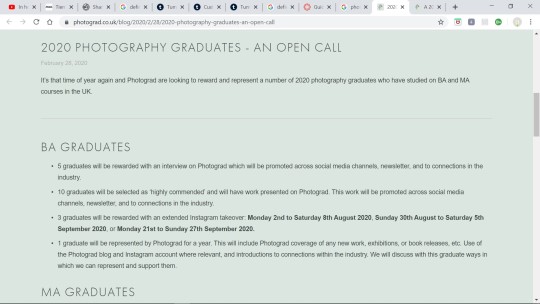
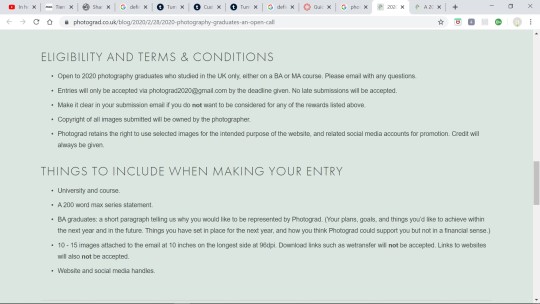
Open Call for 2020 Photography Graduates= Photograd
I submitted my project via email whilst following the guidelines and requirements for the open call for the 2020 photography graduates.


2020 Photography Graduate Zine
This open call was quite similar to the previous zine but this one was for Photograd’s upcoming graduate zine edition which I have entered.
As a student of Photography, I have been referred to Photograd since the beginning of my course and have been a follower ever since as it helps students like me to share work to the world, it’s also a great source to get information from fellow creatives. I hope from submitting my final project, I will be able to promote my work to the wider audience that Photograd has captivated. I want to be able to continue working in the creative industry next year and I think Photograd can help me get the exposure / network that I need to help me achieve the goal.
-Lens Scratch
Link- http://lenscratch.com/student-prize/

It’s a daily journal that explores contemporary photography and offers opportunities for exposure and community. It had a open call / competition for a ‘2020 Lenscratch Student Prize’ which supports student work through an annual Student Prize each June. It’s an enticing journal that helps creates opportunities for students like me to get exposure. The prize only allowed one entry. The journal is geared towards the contemporary, fine art photography which suits well with my practice and my project.
Bonus- It’s FREE

The submission was relatively simple, it was via email. I had to tweak my bio / artistic statement to a 3rd person which was required for the submission.
Project Statement in 3rd Person
John Gurung is a photographer based in Kent, England. Through his practice, he explores notions isolation, identity & sense of belonging. Growing up in both Nepal and UK, he his fuelled by his own experience of seeing which is in this peculiar mix of both eastern and western culture.
-AOP (Association of Photography) Student Awards 2020
Link- https://2020.aopawards.com/enter/
AOP Student Awards are a celebration of the best in photography amongst students, helping to provide that all-important step up to the professional arena. By supporting new emerging talent, the Awards are an opportunity to get a first look at the potential stars of tomorrow. I entered the student awards, I got a discount for my submission since our University is affiliated with AOP
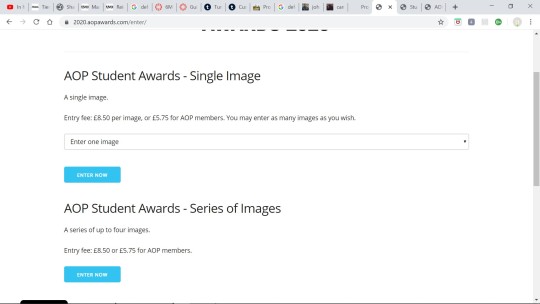
I opted to submit my work to the ‘AOP Student Awards- Series of Images’ which I thought suits my project the best. The images work the best when they are together therefore I entered the project in the series of images.

Within the submission, I had to pick my category of my photographs. I picked people since my work is portraiture heavy.
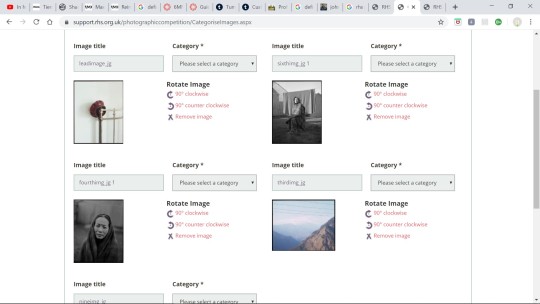
My Submission- Since, I could only enter up to 4 images, I entered four of the images from my work that I think works best as four images. The ‘Gurkha Beret’ image introduces you to the project whilst the portraits of my mother are my one of my strongest portraits in the work and the landscape image added further insight to the project.
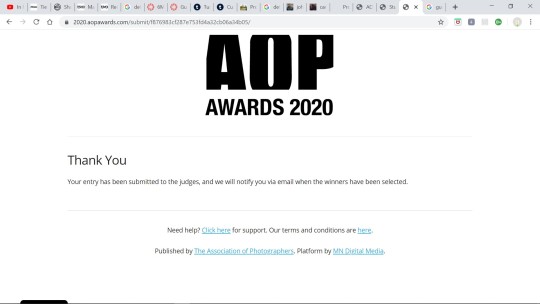
Submission Price
AOP Members: £5.75 per image
Non Members: £8.50 per image
-UH Creative Arts Photographic Portrait 2020
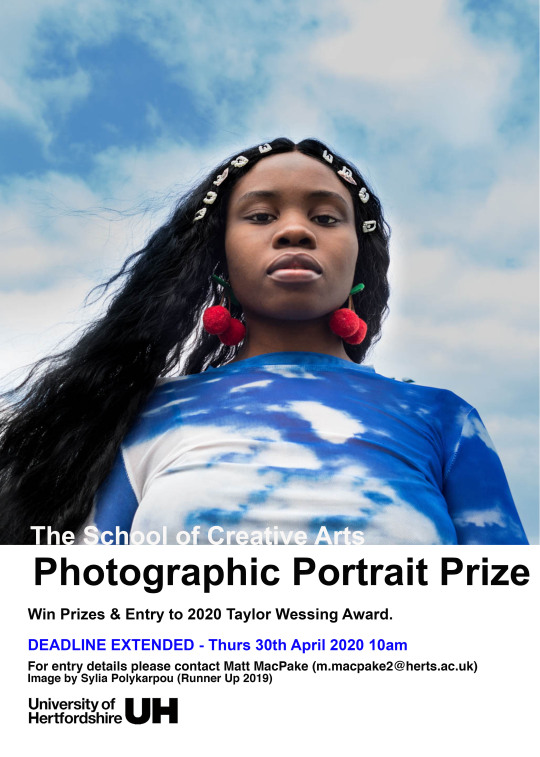
It’s a UH portrait prize, the work has to be portraits. “Photography concerned with portraying people with an emphasis on their identity as individuals”. I could enter 6 images to enter. Photographs could be anything, “can be black and white or colour & made within any genre of photography. Fashion, street, commercial, photojournalism etc if they include people then all are relevant.

For my submission, I submitted 4 of my ‘strongest’ images which was work from my recent personal project. I picked photographs that were visually striking, bold yet subtle in it’s ways.
-F Stop Magazine
Link- https://www.fstopmagazine.com/submissions.html
It’s an online photography magazine featuring contemporary photography from established and emerging photographers from around the world. Each issue has a theme or an idea that the unites the photographs to create a dynamic dialogue among the artists.
Throughout the years, it has open calls for submission for their new issue / interview/ collaborations. It’s a great magazine that supports emerging photographers, they are free to enter.
Bonus- It’s FREE
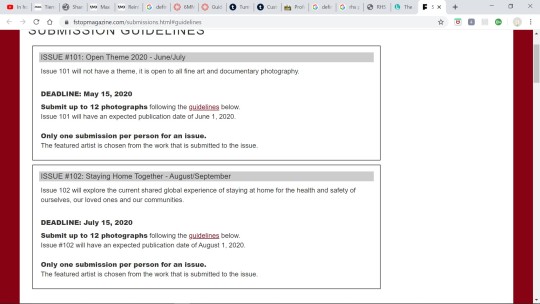
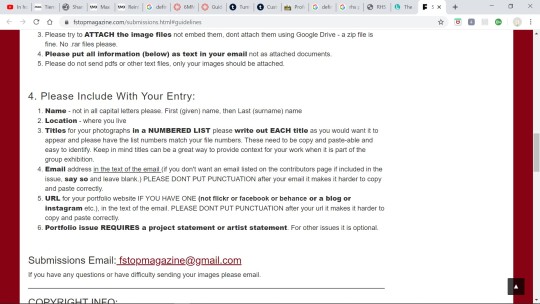
I submitted my photographs to ‘Issue 101′ which was didn’t have a theme but was open for all fine and documentary photography which suits my project.
-Lens Culture
https://www.lensculture.com/photo-competitions/street-photography-awards-2020
Lens Culture is one of the most comprehensive and far-reaching resources for discovering contemporary photography talent around the world. They publish competitions frequently.

I looked to submit to their ‘Street Photography’ competition where it was a free to entry, only downside is that you can only enter one photograph.
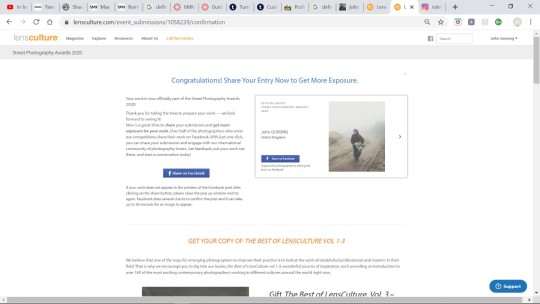
For the submission, I opted to the enter the photograph below (as in screenshot above) which I shot of my aunt as she gloriously welcomed us through the deep mist. It was a genuine welcoming moment for us.
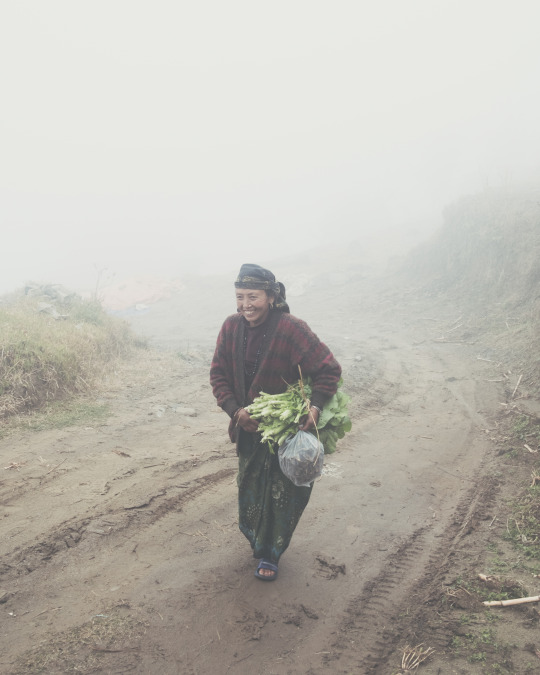
- Source Magazine
Link- https://www.source.ie/graduate/submission/index.html
Source is a quarterly photography magazine published in Belfast, Northern Ireland. It publishes emerging photographic work and engage with the latest in contemporary photography.
It has a competition for students who’s graduating from a Photography Degree or Masters Course in 2020. It’s quite pricey at £33 per student. In addition, the cost includes a free 1-year digital subscription to Source (worth £26.99) with access to their extensive back issue archive and their monthly e-bulletin which will ensure you stay informed with all the latest news and opportunities from the photography sector.
Although I haven’t submitted to the open call yet. I want to discuss amongst our class members since it offers a group submission, I want to get majority involved since we won’t be able to exhibit this year. There’s still time to submit since the deadline is at May. With my recent submissions, I already have files ready for submission. I just need to communicate with this to my peers.
Deadline for BA Students- 12th May 2020
Personal Intake
What I have learned through entering
-File Preparation= It’s important to make sure your photographs / other files is ready for submission. It’s key to read the guidelines of the submission’s requirements as it may lead your work to be disregarded. I found it handy to have both original (scans / raw) as well as high quality jpeg that you have edited for the file compression to be more convenient in the submission.
-Artistic Statement= This can help introduce people to your project and your practice. It’s very important to always have this within your reach. Especially entering competitions, statements can be a gateway to your portfolio, it can help people understand your work more clearly.
-Strong set of photographs= Having a strong set of portfolio of images beforehand is vital, as it keeps you prepared and ready to submit. Having about 15-20 photographs in hand for potential submissions is a strong starting point, I found as competitions normally request for about 10. You can have extra where you can narrow down your set of images for only the best. It’s very important to make sure the set of photographs is coherent and complimentary to it’s sequencing.
-Light room Edits= This can help create more coherent editing in the process of selecting your photographs for submissions. Using Light room is key as you would use to reduce your file size for the requirements of submissions. Having your meta data set is also key as it helps you to maintain the originality of the photographs, especially at a time, where you have to submit your work amongst many others.
- Up to date with deadlines / submission requirements= Being up to date with the deadlines and the submission requirements is very important in submitting work. I have missed various competitions recently due to my lack of organisation skills. To avoid this, I have made reminders on my book and laptop where now, I am up to date with the deadlines and future competitions to make sure I don’t miss any key competitions / open calls in the future.
Previous semester has been quite a busy one with creating work and maintain a schedule for it. In this semester and in the future, with these competitions in mind, I will aim to promote my work through various organisations and magazines to get exposure. It's not a habit of mine to look for open calls and submissions, in the future when my work is more refined and ready, I'll be entering lots of competitions. I have to get used to this when I leave University as I won't be covered by the University, I'll have to self-promote and publish.
0 notes
Text
Photographs Reflection
As I’m about to enter competitions and various open calls. I thought it was time to organise a small collection of photographs that were the strongest in terms of creating a narrative and showcase the project cohesively and individually. I don’t want to just pick the best images but I want photographs that communicate the most appropriate message for the project.
I didn’t want to sequence the images chronologically, since I wanted to leave the work to be ambiguous in it’s narrative. For me, what was more important was that the photographs should be able to create a narrative arc that carries the reader from the first page to the last. I wanted the collection to have a thematic sense of my identity, it would inform the audience of my identity but also be mindful in it’s approach to not being too obvious.
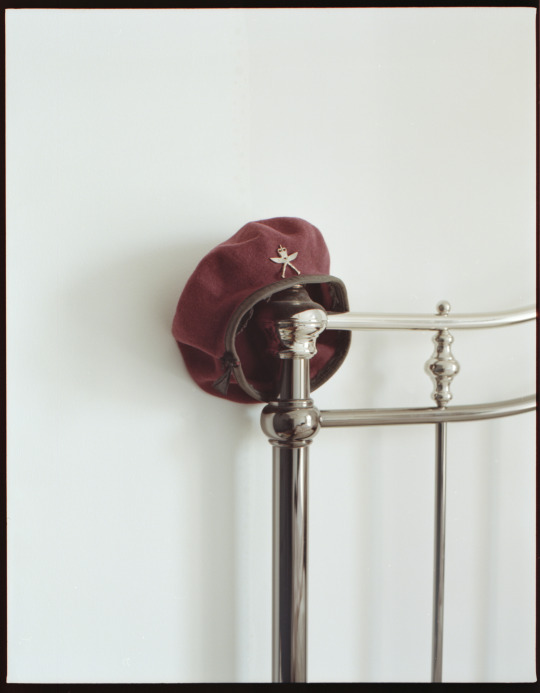
Gurkha Beret
For the opening image, the photo above is a striking and compelling image as it informs you of the project. It’s a metaphorical image such as the Gurkha hat hanging on the bed post is more appropriate as it provides an enigmatic introduction to the project. As the observer progresses through the project the meaning will become less ambiguous and narrative clearer.

Taku, Gorkha
For my landscape images, I picked the photographs, see above and below. For the image above (Taku, Gorkha), I thin the photograph works as an effective image near the start of the collection since it informs you of the setting, it’s an establishing shot which informs you of where the project is based and what the landscape means to the project. The photograph is quite hazy and soft which is a running look of the project which suggests a dream like sense of nostalgic experiences.

UK
I picked the image above as it suggests a metaphorical and subject change in the project which hints at migration, moving away from the place previously shown. The sea represents UK, as Nepal is a landlocked country. The image departs from my homeland into a new horizon. The discolouration of the sea also adds a layer of ambiguity. A further intrigue in the image is that in the distance is that you could see a ship which suggests the physical distance of myself and for what it could be my homeland in the metaphorical sense.

Aama in the garden
Mother= Aama
The two photographs above and below are the two strongest photograph of my mother. They both are visually striking and compelling. The use of black and white worked really well as it shows the figure of my mother, making her seem prominent in the photographs. Although the photographs seem straightforward, they are photographs with a strong framework of exploration of my mother’s identity and my very own, of my home and what it means with careful examination of it.
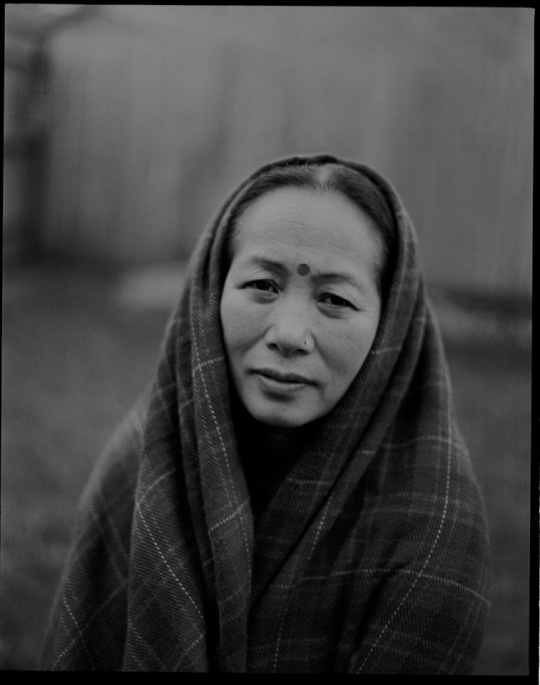
Mero Aaama
My mother= Mero aama
The image feels quite nostalgic. It’s a representation of how I see my other or how I’ve seen her throughout the years. My mother is a prominent figure in my identity, she has transcended the ideas of Nepalese identity throughout my life. The photographs seems like romanticised ideas of my mother, it’s how I see her, striking and dominant whilst also it depicts a soft, delicate overview.
The portraits of my mother evoke the questioning of home, my very own sense of belonging and identity since I began my life with her. My identity started from her. Photographing my mother is a way of confronting my identity and it’s a way to build it as well. It’s this strong urge to preserve my Nepalese identity that drives me as I attempt to rekindle my relationship. The whole project has been a way of creating a sense of attachment to my Nepalese identity but also my separation from them.
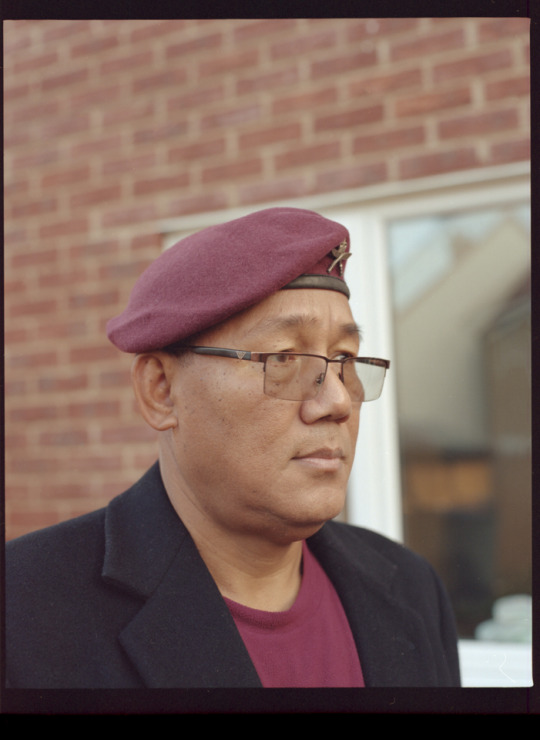
Ex Soldier
The ‘Gurkha Beret’ image introduces you to the theme of the project whilst the photographs (see above and below) hones in on the owner of the hat. I picked these two photographs as they reflect a sense of nostalgia as my father wears his beret which he hasn’t worn in a long time, which just about still fits him.
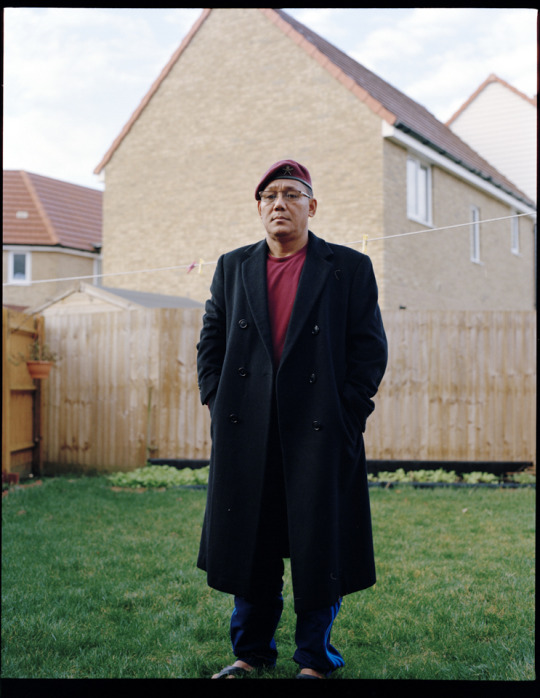
Baba
Father= Baba
I picked the photograph above as my father appear prominent as his figure is authoritative and bold. Whilst the previous photograph offers a closer insight on my father, this photograph makes my father appear more physical and dominant which suggests his involvement in the project and my life.
These images of my father are quite important in the project as I explore the notion of being a ‘Nepalese man’. In the project, there are some universal themes of having a sense of belonging and questioning of identity. Through the portraits, I’m confronting the notion of being a Nepalese man, they’re my ideas of a Nepalese man.

Aama ra Baba
Mother and father= Aama ra Baba
Since the collection / sequence didn’t two subjects in one. I included the image above as it suggests togetherness and it’s quite informative in the sense of adding a narrative to the project. The image depicts the two prominent figures of my life where they are seen to be wearing traditional Nepalese / Gurung dress against the backdrop of my homeland. My father is not wearing the full Gurung dress which can suggests the influence of eastern lifestyle as he wears his jumper and jeans.

Baje
Grandfather= Baje
For more variety in the sequence, I decided to include my grand father in the project which is a major influence in the project. He’s a very important figure in both my life and my parents. I chose the image above as it doesn’t give too much away, it’s very simple the image seems off with it’s off kilter composition. My grandfather appears striking yet grounded which suggests his character. By choosing a simple photograph, I want the viewers to interpret themselves my relationship with this man and others.

Boy in the hill
I wanted to sequence to be playful with it’s subject matter. I chose the image above as it’s anonymous, I have captioned the image as ‘Boy in the hill’ which plays with that idea. It may hint at the viewer that it’s a self portrait, it’s very ambiguous in that sense. I really like the warm tones of the image, it’s quite revealing in that sense yet feels distant as the subjects are far away. The boy in the distance overlooking the hill can suggest a nostalgic viewpoint.

Ghar
House= Ghar
The reason I chose the image above is that it depicts our home in the UK which is quite reminiscent of Nepal with it’s evergreen nature of the garden and the love for which suggests affiliation with nature which is prominent in the landscapes of Nepal. The image has a soft evening light, hinting a peaceful time which is accentuated by the use of soft, pastel colours with warm tones. The image balances and warms the sequence.

Aaam ko Maala
Mother’s necklace= Aama ko Maala
The images above, below and beneath it suggests a nostalgic view upon the Nepalese culture, the images gives you soft glimpses of the objects in my house in UK which informs and reminds you of my identity despite the migration. The images works effectively in the sense that it acts as a memorophilia.
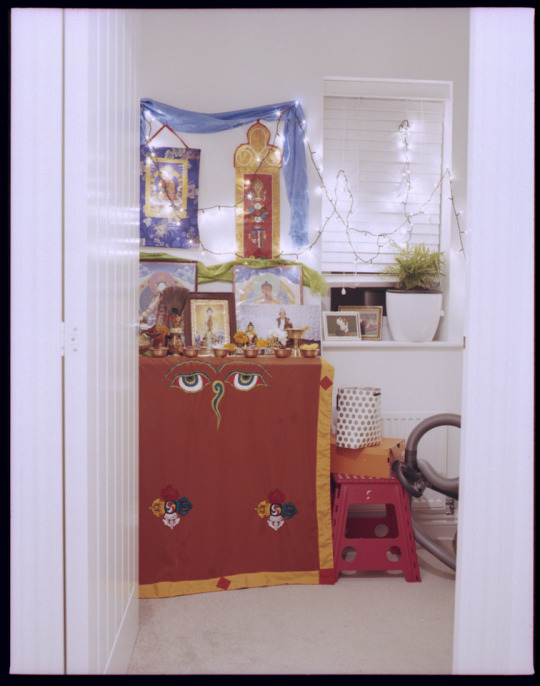
Puja
(Place to) Worship= Puja

Nepalese Calender
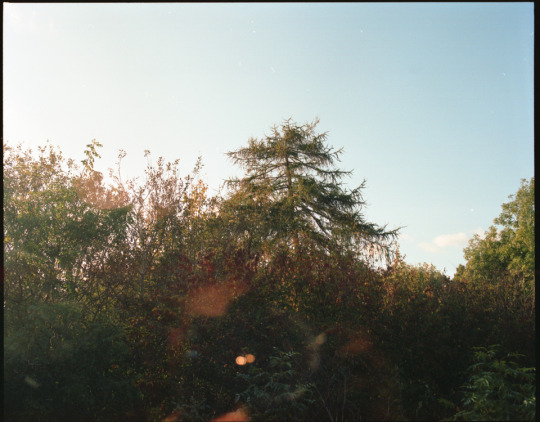
Homeland
I chose the image in the sense which it acts as a metaphorical image in which it depicts a reflective outlook on the project, it doesn’t provide with you any setting or clues to where the place might be. It just silently offers you a glimpse of my life and my introspective moment, thus the image balances the sequence, taking you back to a reflective standpoint.
Overview

As most competitions that I wanted to enter required maximum photographs of 15, I compiled 15 of the photographs that not only were strong images but they were images that worked effectively together to create a narrative around my identity.
Personal Intake
The project explores intimacy, distance, and often tensions between my torn identity. I wanted to bring out these themes in the sequence. I also wanted to sequence it visually with similar colours, subject and form but I didn’t focus too much on this as it would detract the audience from the narrative. Although the photographs are quire straightforward in terms of creating a narrative, the photographs remain ambiguous and metaphorical. There isn’t one way to sequence images. It’s entirely subjective, the project comes from me and is about me, I have a story and this is what I want to tell, this was my approach to the sequencing. It’s not the best (aesthetic) images that communicate the most appropriate message. I simply hope to make my audience understand the context in which the work will be viewed.
Reference
Magnum Photos. 2020. The Language Of Pictures: Exploring Sequencing With Mark Power • Magnum Photos. [online] Available at: <https://www.magnumphotos.com/theory-and-practice/mark-power-the-language-of-pictures-exploring-sequencing/> [Accessed 17 April 2020].
0 notes
Text
Introspection- Project
Project Refinement
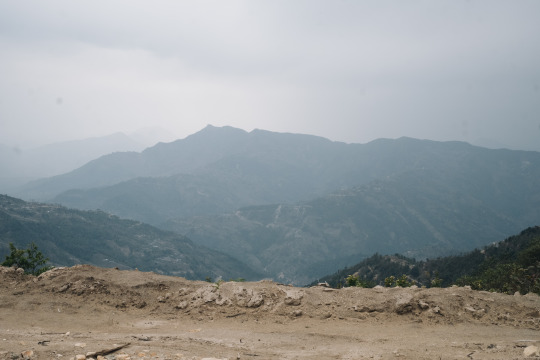
The project is also about places in addition to people and their identity. Those places have strong sense of place that are loaded with meaning and have a specific identity that is deeply felt by many people. In photography, sense of place is about capturing this identity and feeling through visual imagery. In this project, I’m trying to meld this sense of place with a sense of myself and my identity in the same image.This caveat helps us to understand that sense of place is always simultaneously both a shared experience of place and a personal interpretation of that experience.
The project or ‘Mero Pahichaan’ (Nepali) which translates to ‘My Identity’ involves capturing an essence that many people from Nepal would recognise as the unique feel of places ranging from the vast landscapes of Nepal to the spacious greens of the forest and the deep blues of the seas in the UK. These places gain much of their identity from being situated within the historical and cultural region. Our experiences of growing up and dwelling within this region are coloured by the meanings and almost mythical qualities we ascribe to it. When we experience these places, we are experiencing a deeply felt identity of place.
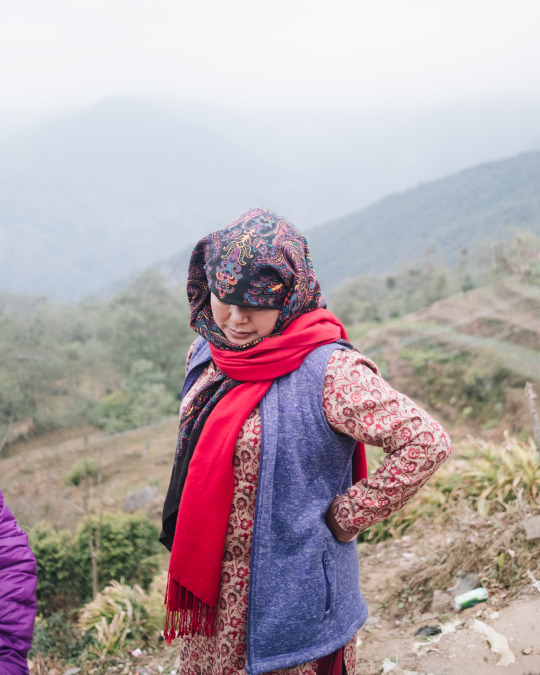
In my photographs, this feeling of place is filtered, of course, through my own experiences of growing up in Nepal. Using subject matter, color and treatment, I attempt to tell a story about sense of place both in Nepal and UK. The soft colour, diffused colour pallate and often deep gazes at the sea, landscapes as well people capture a romanticised vision of place conveyed by the feelings they inspire. These photographs express my personal nostalgia for a long past period of my life and the places of my childhood. I believe that they also inspire feelings of nostalgia in many of the people who view them.
As much as the project is about identity, the project is very nostalgic in it’s ways. Google defines nostalgia as “a sentimental longing or wistful affection for the past, typically for a period or place with happy personal associations”. Sense of place is one of the primary vehicles for nostalgia. Nostalgic photographs communicate romanticised notions of personally and culturally important times and places. To romanticise is to idealise; to make something seem better than it really was. So it is with the photographs in this project; they do not document the way things really were. Instead, they communicate my selective, romantic memories of growing up in a specific place and time, coloured by my present circumstances. The images are felt as warm and familiar by many, because they stimulate embodied memories of some common experiences of place and people in this project.
Photographs with embodied memory and experiences
Capturing sense of place in photography is possible because viewing photographs that combine imagery in specific ways can stimulate bodily recollections of experiences of ourselves in place, along with the meanings, symbols and beliefs associated with that place. Sense of place is more about experiencing ourselves in a place, in a specific space and time, than it is about the place itself. Viewing a photograph can spark powerful feelings of nostalgia that well up from our embodied memories of sense of place. Indeed, photos have been an important means of propagating nostalgic social movements since the invention of photography itself. These kinds of movements can grow in size and power quickly, simply because they are anchored in very specific personal feelings of nostalgia.
0 notes
Text
Reshoots
There some photographs that I wasn’t completely satisfied with therefore I decided to re shoot couple of the shots that I had taken in the previous year. In addition, I also want to create additional photographs to fill in as supplementary images. I wanted the project to have more varieties and options to experiment with, whilst I already had some strong photographs, I want to re-shoot to refine them.
Winter Holiday Shoot
Portrait of my Father
New Shoot
I want to improve on portrait of my father as he’s quite an important figure in my project and life. He’s quite central to my project’s theme as he represents my Nepalese identity as he’s former Nepalese British soldier. His presence and status made me who I am. In the previous semester, I thought some of the photographs of him wasn’t strong enough, they were great starting point but it lacked the power punch to me.
For the new shoot, I want to re shoot the photographs of him wearing the ‘Gurkha Beret’ who is symbolic to that of Nepalese identity. I want to style him, where he wears something that makes him authoritative whilst being subtle. I have couple of shots in mind where I want to make him quite prominent in the shots whilst also vulnerable. Within the shoot, I want to play upon this role of an retired Gurkha soldier looking back at his younger years. I want the photographs to appear reflective in that sense.
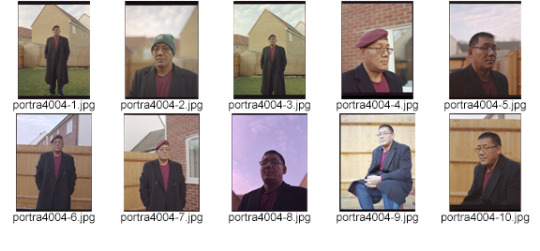
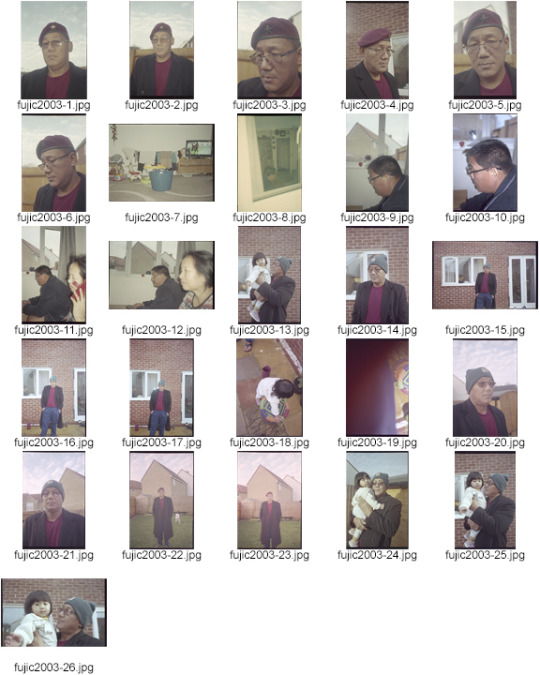
This shoot was predominantly be about my father, creating photographs that reflects a sense of Nepalese identity which is quite prominent in the photographs, suggested by the Gurkha Beret.
The stronger images are in the first contact sheet where the portraits of my father on a garden against the house in the background is quite striking, making my father appear prominent as his figure is authoritative and bold. The close-ups aren’t as strong, the only striking one is the ‘portra40004-4′ where my father appears vulnerable yet physical in the sense of his figure.
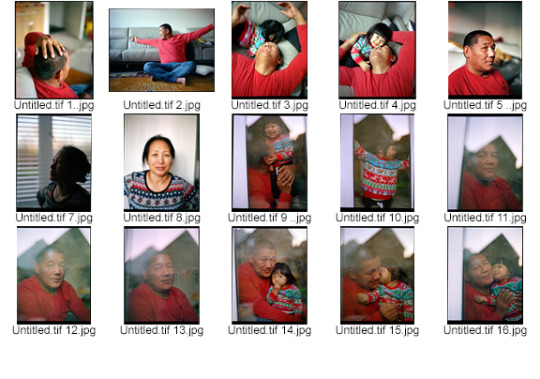
The shoot was result of spur of a moment, whilst I was with my camera with few rolls. The evening light was just right to photograph, the sun was coming straight through our window and the light was falling fast. In the shoot, I aimed to capture raw and intimate moments between our family, it showed a different perspective to previous photographs. The first portrait of my father is a quite strong, it’s visually striking and bold with the use of bright, vivid colours. The detailed shot of my father’s hand (with a gold ring) caressing his head offers a more ‘poetic’ way to his life where it could suggest life after retirement. In the later stage of the shoot as the light was fading fast, I had this idea to create photographs of my father and niece through a window, I liked this idea of a layer of glass between us, it provides you with an insight to the subject’s life whilst being quite distant, this could perhaps suggest my separation from my Nepalese identity through the distance from my father in the photograph.
Final Conclusion:
I think the shoot was very effective as they reflect this sense of nostalgia as I photograph my father wearing his soldier hat. I mentioned previously that despite this project is very personal, the work has universal themes that explores the sense of belonging, I think the shots reflect this. As I photographed, I confronted my father about Nepalese identity, the process was quite meditative, I think this shows in the photograph. The active dialogue between the photographer and the subject (and inevitably the viewer) became for me the essential point of a photograph.
The photographs of my father are quite important in the project as I explore the notion of being a ‘Nepalese man’. In the project, there are some universal themes of having a sense of belonging and questioning of identity. Through the portraits, I’m confronting the notion of being a Nepalese man, they’re my ideas of a Nepalese man.
Now that I have covered my father. I'd like to re-direct my focus on my mother who's the most important aspect of this project. In the previous semester, I had one of my strongest photographs in the project of my mother. The black and white portraits were striking and had this classic timeless yet nostalgic feel to them. Although they were strong, I want to do couple a re-shoots with the ideas mentioned.
She is very central in the theme of this project, as well as my life, she's the reason I'm here and the reason I'm able to do what I do. So far, I have created photographs that are quite unusual and intimate, I want to move away from and want to hone in on her Nepalese identity.
Photo-shoot II
New Test:
In this shoot, I want to focus strongly on my mother, she's a very strong figure in this project therefore I want to make her quite dominant yet sensitive in the photographs. To make this a strong shoot, I want to use black and white film (Ilford FP4) to highlight her as a significant figure. I want to use a Nepalese scarf/ blanket, also known as 'stole' which is what typically a Nepalese women will be seen in, especially where my mother is from, a village near the top of the hill where it's very cold therefore the stole is quite effective in that sense. Especially the pattern of the stole, which is plaid, this type is prominently in seen in Nepalese women.
I want to create photographs in a studio like situation since we don't have one. I have this idea of using our back garden as a studio backdrop which acts as a studio backdrop to highlight my mother. Although it's quite a formal situation, I want to experiment with various shots that aren't so formal.
The nature of black and white is very minimal, it leads you to focus on the important aspects of a photograph such as the frame, lines and figures. I want to use this nature of black and white to create strong looking photographs that emphasise the strong figure of my mother.
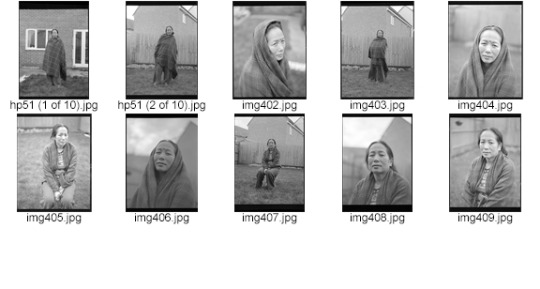
Conclusion:
The photographs turned out be effective in my eyes. The use of black and white worked really well as it shows the figure of my mother, making her seem prominent in the photographs. Although the photographs seem straightforward, they are photographs with a strong framework of exploration of my mother's identity and my very own, of my home and what it means with careful examination of it.
The photographs feel quite nostalgic to me. I think I have instinctively created photographs of my mother as I see or how I’ve seen her throughout the years. My mother is a prominent figure in my identity, she has transcended the ideas of Nepalese identity throughout my life. The photographs seems like romanticised ideas of my mother, it’s how I see her, striking and dominant whilst she depicts her soft, delicate side, especially evident in ‘img404′.
The portraits of my mother evoke the questioning of home, my very own sense of belonging and identity since I began my life with her. My identity started from her. Photographing my mother is a way of confronting my identity and it's a way to build it as well. It's this strong urge to preserve my Nepalese identity that drives me as I attempt to rekindle my relationship. The whole project has been a way of creating a sense of attachment to my Nepalese identity but also my separation from them.
The re shoot was a great success for me, the photographs reflect an intimate relationship between me and my parents. My work draws huge influences from Larry Sultan & Nigel Shafran where my photographs convey a feeling of attachment and a deep exploration of my family. Photography is ultimately personal; it contains sentimental knowledge and a truth that can serve as a point of departure for our own interpretations. Photographs in this project have a very strong link to the idea of "punctum" which Roland Barthes describes it as "the love of an image". In my work, I aim to convey such feeling, that personally touching detail which establishes a direct relationship with the object or person with it to the viewer. The camera becomes this "bridge" that enables me to connect with my family on a personal level. The whole project has been a way of creating a sense of attachment to my Nepalese identity but also my separation from them.
Overall, the work has an intimacy to it which underscores the closeness and bond of my family. Although the work varies from still life, portraits and landscapes, the photographs draw you in and you instead gaze on the intricate personal details of the figures seemingly lost in their own world. Although deeply personal, the work welcomes you into it's lost world, evoking a sense of understanding and vulnerability.
Project Proposal
My work focuses on this idea of being lost, with me being Nepalese who has long lived in the UK. It explores intimacy, distance, and often tensions between my torn identity. I aim to use experimental photographic medium such as polaroid and film to interrogate the personal and culture issues around migration, displacement and colonialism found within the South Asian Diaspora. Focusing on my family and how our relationship, memories and bodies are intertwined. The photographs reflect a mood of confinement and my relationship with the Nepalese/British identity.
Semester B
I have effectively completed my re shoots, I will focus on on refining the project to be more clear and clarify the project to be more straightforward whilst also quite open and ambiguous. Now, I want to focus on promotion, design, exhibition layout, printing options, etc. This semester will primary focus on promotion, publication, refinement and having tangible products of the project.
Goals moving forward
-Scan film on Hasselblad scanner for high quality scans (Backed Up on 2 HD) by end of February
-Enter Competitions / Open Calls- Focus on promoting
-For the exposure, get artistic statement and the project statement ready
-Short PDF explaining about the project and the collection of photographs
-Critical Rationale, talking about your process and practice
0 notes
Text
Semester A Reflection
In semester A, I primary focused on creating the project for my FMP in which I created proposals and overall theme of the project which I tweaked as I went along in the semester. At first the project, the revolved around the idea of home or rather being away from it. I wanted to explore the notion of "home" in such a personal way as a welcome challenge: an invitation to self-exploration. Being away, travelling, seeking, meeting- using the camera to escape & explore.
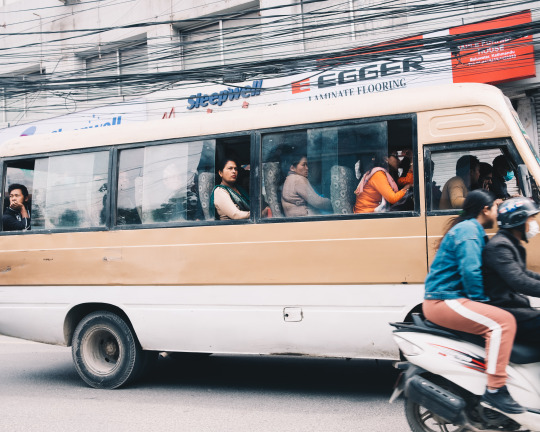
As I progressed into the semester, the project took different turns as I experimented more and created new photographs. Rather than taking photographs of home, I somehow instinctively created photographs that was much about my family, where I was in my life at the moment of time. As I was in final year, where I was expected to be prepared to go out of Uni and be in the ‘real world’. I was meant to be fully prepared and ready. However, I didn’t feel that way at all. Maybe it was all the years studying before hand, all the way from nursery, I haven’t stopped studying ever since. It was only last year that I took a placement year which was more about taking a break from studying. It was apparent that I didn’t realise who I was or what I really wanted to purse in life, in creative arts. This, I think influenced a change in the project, where the project somehow unknowingly steered itself into it being about me, who am I, my identity and what I want to tell the world.
With most of my projects, if not all. I’m a stranger, an outsider almost despite personal projects. I try to look at it from an outsider’s perspective, like an alien which I think it’s a great critical position to be in as everything is new to the eye, it’s a meditative state of mind for strong work. As things become more familiar, it becomes increasingly difficult to look at things with a critical eye. For me, this project is more how I see myself, what I think about my identity and is a way to show the world more about myself and my culture / community. It’s an introductory project which proclaims and speaks proudly about who I am and where I’m from. I have lived in the UK more than I lived in Nepal. However, I’m still deeply connected with my home, Nepal, it’s more than a place for me, it’s who I am. As I progressed, the photographs became more interconnected in terms of their subject matter, a deeper layer of meaning is created in their being set in relation to one another. I want to move away from a particular type of practice that involves making projects with a clearly defined beginning and end. I am more interested in taking series and evolving the into different manifestations as they grow.
Gradually, I became conscious of this change and I focused on this change of direction with the project. It manifested into being much more about me, where I’m from and what effect it had on me. With this in mind, I created a second proposal to the project where I wanted to focus more on my identity and how that connected with sense of place.
Project Proposal
My work focuses on this idea of being lost, with me being Nepalese who has long lived in the UK. It explores intimacy, distance, and often tensions between my torn identity. I aim to use experimental photographic medium such as polaroid and film to interrogate the personal and culture issues around migration, displacement and colonialism found within the South Asian Diaspora. Focusing on my family and how our relationship, memories and bodies are intertwined. The photographs reflect a mood of confinement and my relationship with the Nepalese/British identity.
"Photography can’t talk. I like to take photographs of things that look like home."
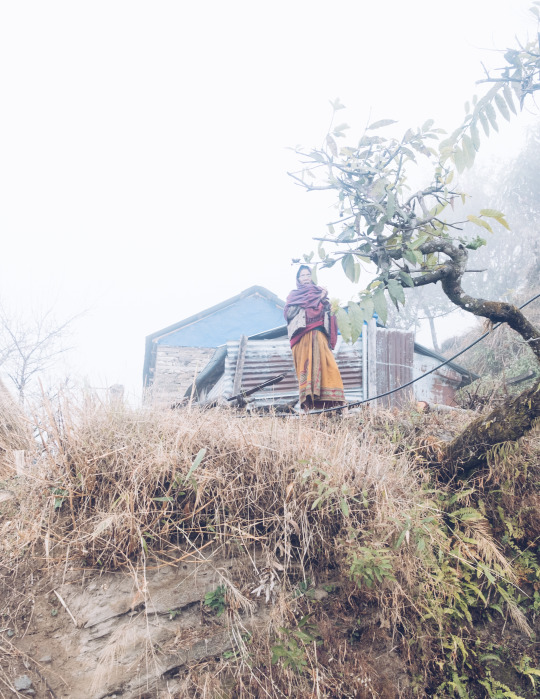
The project became more clear to me where I honed my practice in focusing on the themes of identity. I found a new passion for the project, in which I’d want to push the project to a long term based project, something I can continually push on even after leaving University. I know that I will visit some time in the next couple of years, it’s a place that I will always look forward to. Therefore it made to sense that I’d want to purse this project in the future where the project could possibly head into various direction and be influenced by many other factors in the future.
Exploring my heritage and this unexplored region will hopefully make me stand me out in the "photographic industry" as I want to document the lives of us, Nepalese way of living. This is an ongoing side project of mine for the past several months and I hope to create more in the future.
"Art does not reproduce the visible, rather it makes visible." - Paul Klee
Semester B
In this semester B, I will focus on refining the project to be more clear and clarify the project to be more straightforward whilst also quite open and ambiguous. I have some re-shoots that I’m looking to refine which I will hopefully do in the first few weeks of the semester. After, I want to focus on promotion, design, exhibition layout, printing options, etc. This semester will primary focus on promotion, publication, refinement and having tangible products of the project.
Goals for this semester
-Finish Re-shoots before 15th of February
-Scan film on Hasselblad scanner for high quality scans (Backed Up on 2 HD) by end of February
-Experiment with darkroom prints
-Archive Prints and negatives appropriately
-Enter Competitions / Open Calls- Focus on promoting
-For the exposure, get artistic statement and the project statement ready
-Photo book designed and finalised
-Exhibition Layout / Plan
-Experiment on printing options= Local Labs
-Sponsorship from local printing labs
-Short PDF explaining about the project and the collection of photographs
-Critical Rationale, talking about your process and practice
0 notes
Text
Hayleigh Longman Art Talk + Tutorial
Hayleigh Longman is a recent photography graduate from Manchester School of Art. Her practice consists of working with people through portraiture and social documentary with a creative and abstract approach.
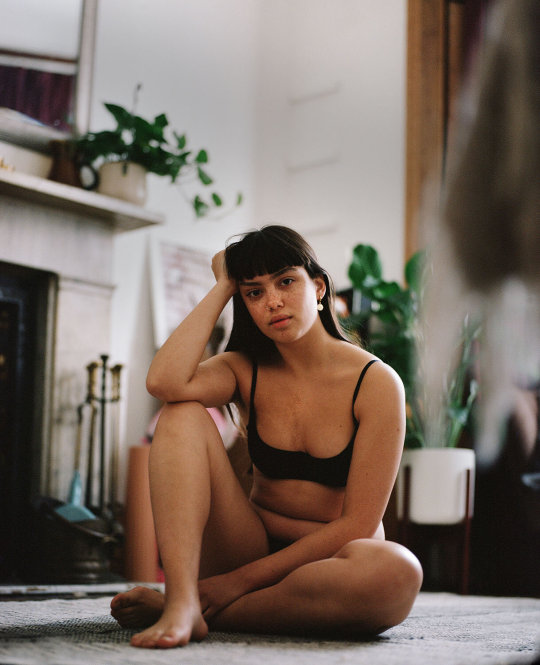
Her delicate composition explores complex, personal issues rooted in the conversations between her subject and herself.
Hayleigh’s portfolio contains stories of personal encounters, intermingled with her own experiences.

For Longman, working with people is what she’s passionate about. She enjoys sharing personal stories and experiences. As the photographer, you gain a sense of being part of the process. Simultaneously, you get to produce images that contribute in raising awareness for widespread issues and affairs that affect so many people.
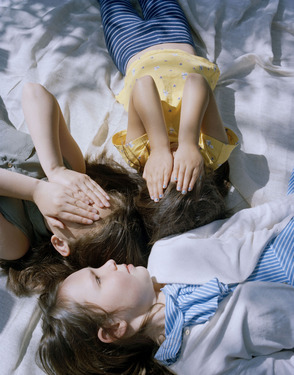
Her work orients people who mean a lot to her, or people she has met who have impacted her life in perhaps little, but significant ways. Past and present experiences have encouraged the abstraction throughout her work, photographing her life and the things important to her to share in a way people can understand with a narrative that has been painstakingly put together through her photography.
This series of work (as shown above) ‘The shed was our spaceship’ exploring subjects such as childhood and imagination. Hayleigh Longman has self-staged a series on reflection of her own childhood in a poetic style.
Whilst working closely with children ages three to nine as a constructed part of work to re-discover the child inside herself, Hayleigh's work naturally moulded into a series around the beautifully organic imagination of a child along the way.
Art Talk Notes
-Studied BA Photography at Manchester School of Art
-Throughout the University, she accumulated bodies of work that worked together cohesively which strengthen her portfolio

-Created personal bodies of work early on. For example, she documented her grandad’s local pub, in which he has being going there for 5-6 years, had a drinking problem. He is the last siblings out of 11.
-Assisted various photographers from the time she was at University, in which she was exposed to professional working world of photography
-Volunteered as a assistant curator for Open Eye gallery. (Thomas duke) This is was when she realised for passion for curation
-Assisted Tony Mallon, a photographer in which she assisted in his projects which was about a group of socially engaged women in support groups. This is where Longman was able to experience the working scenes behind photography

-Upon volunterring for the gallery. She was invited to take part on a brief which urged people to talk about the North and what it meant to her. Her independent response to the brief ‘Our North’ has come from her personal experience of moving from the South to the North – for the past three and half years she have been living in Manchester, having moved from London. The North has a very significant meaning to her and not only have she got to know Manchester, but various other parts of the North too, and so the project has been influenced by the experience of moving from one place to another.
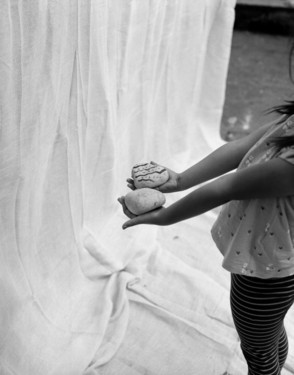
-For photography has always been personal and and eye-opening. This led to her final year project where she indulged in a topics that explored photography as therapy. From this, she was able to create a body of work, ‘The shed was our spaceship’ where she explores subjects such as childhood and imagination inspired by her personal childhood experiences.
-Through her previous experiences, her newfound confidence in her own abilities led to her to be able to network and get her out there. For example, through her final body of work at Uni, she reached out to several social media sites, organised an open calls to reach out to group of mothers who kindly let her photograph their children in helping her create the work.
Life after graduation
-Moved back to London, struggled. She was a waitress for 5 months, full time. Lost all her connections then travelled around for some time
-When she came back from travelling, she carried on working as a waitress.
-She started missing photography and wanted to get back into it therefore her list of contacts, she emailed most of the people on her list. From that, she was able to find work in London at Peckham where she worked as an assistant curator. From that place, she has met many other creatives and has inspired her to stay within the industry and pursue her photographic interests
-Went to ‘PhotoMe’ festival where she got her portfolio reviewed
-Now she works between commissions and her personal projects
Although Longman was unclear at times at her Uni, she still pushed forward and kept herself open to new experiences. “Working with the gallery has taught me how to time manage, as I have had to meet with them every other month to keep a check of my progress and how I can add to my leadership skills, and so on. Working with the youth groups was a huge step out of my comfort zone, especially as I couldn’t commute to Liverpool as often as some of the other volunteers – you have to really throw yourself into the group with socially engaged projects like this. Despite this, the most valuable thing I have learnt from this project is how willing people are to get involved when responding to something they can personally relate to. I’ve never done a project involving a call out for people willing to get involved – whoever contacted me became part of my body of work. I was shocked by how many people reacted to my ideas for the project and through interviewing each person that I photographed it has given me even more ideas and perceptions of the North to take forward in my own work.”
Through this simple experience, Longman was able to lots of experience which opened her vision to new horizons. This has clearly impacted Longman, this is evident until now, where she works at Peckham as an assistant curator. She is truly relatable and honest in every sense. In the art talk, not only she shared her success but she shared the toughness and her hardships within the industry. At times, she had to work as waitress or other retail jobs to maintain finance, but all in all, it’s also part of the process, it’s part of the awakening. She prepared us for the hardships and the difficult times but also remained hopefully and optimistic for the future which I think has helped her to be where she’s at right now.
Life after Uni for her has been a productive one after her decision on fully committing to photography, she has able to network and has pursed her own personal projects more often. Recently, she was part of the
Awards
2019, Metro Imaging Mentorship Award
2019, Silver Art Award, Heritage Lottery Fund
Shortlist: Lensculture black and white award 2019
Silver Art Award, Heritage Lottery Fund 2019
RedEye Graduate Prize 2018
Shortlist: Peli Case competition 2018
2018, Redeye Graduate Prize
Residencies
Collectivism Residency, Haarlem Artspace. Wirksworth 2019
Artist residency, Bathroom Darkroom Project 2018
Exhibitions
2019, Photofusion Salon, London
2019, Homeland, Revolv Collective, London
2019, Violet Nights, Hayward Gallery, London
2018, Photofusion Salon, London
2018, Not the Final Major, Brighton Photofringe, Hastings
2018, Route, Voies-Off Festival, Arles France
2018, Beyond the Camera, Pingyao International Photo Festival, China
2018, Take Flight, Vertical Gallery, Manchester
2018, Temporary Bathroom Darkroom, Grosvenor Gallery, Manchester
2018, Our North, Open Eye Gallery, Liverpool
Curation
2020, Sixteen x S2AU, Photofusion, London
2019, Haarlem Artspace Trial, Wirksworth Festival
2019, Assistant Curator, Made in Wirksworth, Wirksworth Festival
2019, Assistant Curator, Peckham 24, London
2017, Artist Liaison, LOOK Photography Festival
Residencies
2019, Collectivism Residency, Haarlem Artspace, Wirksworth
2018, Bathroom Darkroom Project Residency
Features
PORT Magazine
Women in Photo
Revolv Collective
Notion Magazine
The Photographers’ Gallery
Entitled Magazine
Open Eye Gallery
Questions
How did you get started?
BA in Photography. Throughout her University, she assisted various photographers such as Matt Lee and Tony Mallon in which she was exposed to the business side of photography. She also worked as an assistant at a photography gallery as well. She exposed herself to photography as much as possible.
How do you get work?
Through her list of contacts that she gained whilst her time at University, she was able to land a role as an assistant curator in a gallery at London. From this role, she was able to meet potential collaborators and clients. In addition, she would then lead on to assist photographers that she met whilst undertaking the assistant curator role. Upon this role, she was able to expose herself to more and more creative people, in which she has been able to land job opportunities to support both her finance and her personal project as well.
Things to Take Away
-Pro activeness= Despite being in full time jobs and life after University, she was still interested in photography. She pursed her own personal interests in her spare time, whilst also promoting them to social media and potential clients.
-Competitions= Enter competitions, open calls, getting your work out there. Through this, Longman was able to lots of exposure, which then snowballed into paid jobs. It’s his drive to get his work out there that drives him, to get more people interested in his subject matter, to share.
-Hands on approach / First hand experiences= In her years at Uni, she opened herself to new experiences and opportunities. For example, she volunteered for a gallery which then snowballed into various opportunities
-Assist photographers with similar interests= She worked with photographers that she felt relatable to and helped her with her growth as a photographer herself
-Creates work that is personal to her= Throughout her career, she has manged to amend briefs so that it suits her personal interests which she is very effective, which becomes part of her practice
- Show work and remind photo editors of your work= Constant critique from your peers and networking is key to growth. Not just photographers, but also photo editors who gets you paid jobs.
-Drive for personal projects= t’s important to have your personal interests that motivate you to keep on going. It’s the ideas or concept that will push you forward in long term.
-Cohesive work= Even his commercial /commissioned work seems to be very much influenced by his personal projects.
-Resilient= Stay resilient throughout hardships and challenges. Stay proactive, get networking and always keep on experimenting. Life is after Uni, most important thing is to keep going and keep pushing your interests. Life will be hard but not all the time.
--------------------------------------------------------------------------------------------------
Tutorial with Hayleigh Longman
After the talk, we was given the great opportunity to have a tutorial with Longman for our photographic questioning and needs. With my tutorial, I showed her my vast photographs for my FMP which I needed help sequencing and needed help to be more clear and concise with the project.
Tutorial Record
-Who?= Small Group
-Date, location and module title= 24/02/20 Degree Major Project
-What was the aim of the tutorial?=
Introduce Hayleight to the project and get a review on the work through my current selection of images
Using a brief 'artist statement' on the project, explain to Hayleigh about the project
From the statement, try to get it the message across to the images
Work on the collection of images, sequencing?
Review on artefact or overall goal of the project
-What were the main points covered?=
Sequencing
Overall theme and message of the project
Overall goal of the project- Artefacts, exhibition, promotion, etc
Current Edits of the work
-Were there any contextual references or recommendations mentioned?=
Wolfgang Tillmans= Display of work
Work on this 'diaristic' approach
Work on contexts of the work, conversation, video, photographs, texts, etc emphasis on a personal touch
Work on Critical Rationale / artist statement
-Any actions to come out of tutorial?=
Sequence (Tighter Edit)
Display (Exhibition)= Experiment with size, scale, prints, quantity
Work on writing, critical rationale
Continue Experimentation on work
0 notes
Text
Carl Bigmore Art Talk
Carl Bigmore is a documentary photographer with a preoccupation for environmental portraiture and landscapes, exploring the realms of fact and fiction, alongside the relationship between individuals and their surroundings.

His work is primary focused on the relationship between people and place. He is particularly interested in how people relate to their environment during a period of rapid ecological change.
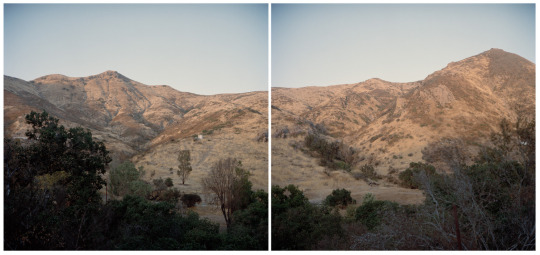
Throughout this personal projects, he creates work around people and place. In his work, ‘Between Two Mysteries’. A photographic exploration of the Pacific Northwest of America. The body of work seeks the elusive space between the real and imagined. That place that is indefinable and mysterious, much like the beguiling landscape of the Pacific Northwest itself.
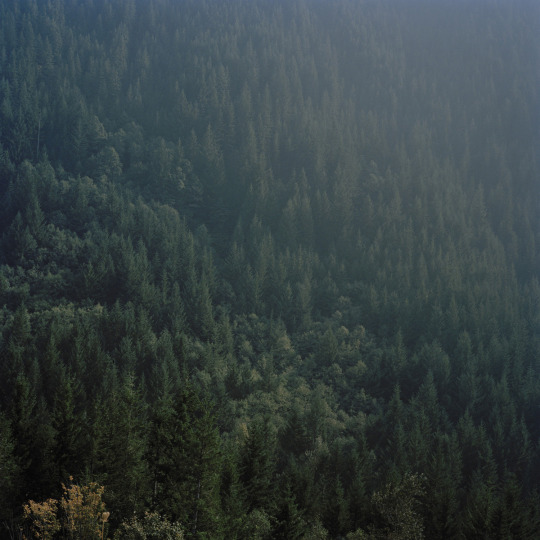
Grounded in creating a sense of place his work explores the space between fact and fiction to capture an essence beyond the everyday. His approach to photography is infused with the influence of film and music where tone and atmosphere are just as integral as narrative.
Art Talk Notes
-Studied BA Photography at UH in 2006
-Studied MA in Photojournalism and Documentary Photography from the London College of Communication in 2014
-Always been around photography, his granddad worked for Kodak. In his early years, he worked at various photo labs at London.
-Photo assisted various photographers such as Sam Faulkner (documentary & war photographer) where he scanned, assisted in production, archive storage etc
-Worked at Apple Records where the company handled archive of The Beatle’s work where his role was a archivist/ photo technician where he had to scan film and handled all the archive of the photographs of the band. Did this for about 7 years
-Through his job, he created mini projects that explored the lifestyle and the garden one of the band member
-Then, he wanted to pursue his own photography, wanted to have more flexibility in his schedule where he could purse his personal projects. Through his network, he was able to get an offer from The Sunday Times where he now works as a picture editor and researcher.
-Now, he’s able to balance his work at The Sunday Times and his pursuit of his personal projects in his spare time
-Has self-published a small run of Between Two Mysteries which was quite successful in it’s run
- Network of people is always really helpful for gaining access to new work
“I have a background in documentary but I don’t consider myself to be a photojournalist. I like to be out and about making pictures but I take a slower approach, usually making portraits and landscapes. Although increasingly that’s changing, and my images of people are becoming a bit more spontaneous whilst retaining an air of quietness. The key for me is taking pictures that have an emotional resonance. It’s not something that’s easily described. But that’s why I take pictures; to articulate those experiences and feelings that seem limited by words.”
Awards
2018- Shortlisted, Athens Photo Festival
2017- Winner, Magnum/Photo London Graduate Photographers Award
2016- Winner, Royal Photographic Society/The Photographic Angle Environmental Bursary
Nominated, Magnum/Photo London Graduate Photographers Award
2015
Shortlisted, Bar Tur Photobook Award
Winner, The Louis Roederer Foundation Student Public Award, Planche(s) Contact
Shortlisted, Royal Photographic Society/The Photographic Angle Environmental Bursary
Shortlisted, Luma Rencontres Dummy Book Award Arles
Winner, Magenta Foundation Flash Forward Emerging Talent
Shortlisted, European Publishers Award for Photography
Nominated, Magnum/Photo London Graduate Photographers Award
Winner, Metro Imaging Mentorship Prize
2013
Shortlisted, Joan Wakelin Bursary
2011
Nominated, Peoples Choice Award Blurb Books’ “Photography Book Now”
Publications
2017
A Place Both Wonderful and Strange, Fuego Books
Unseen London, Hoxton Mini Press
2015
Magenta Flash Forward, Emerging Photographers
2014
Between Two Mysteries, Self-Published
For Bigmore, photography books seems to be a big influence in his work, he has self published his own book, often it’s his main goal of a project, in which he explores the storytelling and the narrative aspect of the work.
Always keen on photography, it seems like he has always been into photography, it’s his main passion and interest. Working from early on has certainly helped me to stay occupied and interested within photography. In which, he was able to amass a sufficient working experience within photography to be able to stay within the creative industry whether that’s assisting, working in labs, archiving or working as a photo editor. Aside from his commissions and jobs, he focuses his spare time on personal projects which he finds more joy and solace in. Through this, he has managed to culminate a wide body of work that explores similar themes with various subject matter ranging from the wild west of America to documenting the European Belt. He’s always constantly creating work, always curious.
Things to Take Away
-Pro activeness= Despite being in full time jobs and life after University, he is still fascinated and still pursues his personal interests vigorously. He’s currently working several new projects which he works on in his spare time, whilst also promoting them to social media and potential clients.
-Competitions= Enter competitions, open calls, getting your work out there. Through this, Bigmore was able to lots of exposure, which then snowballed into paid jobs. It’s his drive to get his work out there that drives him, to get more people interested in his subject matter, to share.
- Show work and remind photo editors of your work= Constant critique from your peers and networking is key to growth. Not just photographers, but also photo editors who gets you paid jobs. Since he's a documentary photographer, he tries to get grants from his personal projects that drives him to pursue photography. As well as pitching/ presenting his work to various publications to get more recognised.
-Drive for personal projects= t’s important to have your personal interests that motivate you to keep on going. It’s the ideas or concept that will push you forward in long term. Whilst he worked as for an archivist for Apple Records, he still managed to find time and interest for his photography, where he took photographs of one of the band member’s vast garden.
-Keep experimenting despite low gears= Fancy things or technique doesn’t attract him, he uses minimal gear with a clear focus on subject matter which he manages to effectively highlight in his projects. He uses a simple, 1958 Rolleiflex, 6x6 Twin Reflex Camera. With a focus on his subject and a drive for documenting his subject matter with minimal gear and equipment, he has been able to amass an impressive portfolio early on up until now.
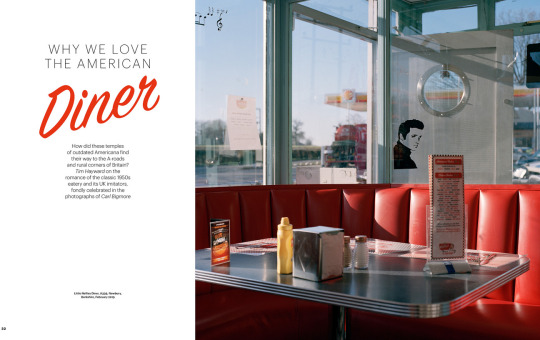
American Diner
-Cohesive work= Even his commercial /commissioned work seems to be very much influenced by his personal projects. For example for his work as shown above, American Diner in which he documented an American Diner all around UK. He was able to amass a body of work that centred around the diner and then he was able to get commissioned from the project in which he got his work published in various magazines. Even after producing work, he still manages to find ways he can get exposure and commissions through it.
-Planning for the future / accumulating a big body of work= Even early on his career, it seems he has somehow accumulated a cohesive body of work, despite his commercial work, this still relates back to his personal projects. From early on, you can clearly sense a clear journey towards where he is now, which he has honed and refined through his career.
0 notes
Text
Luke Stephenson- Tutorial
For Luke’s tutorial, I prepared small 6x4 prints of my photographs of the project. I briefly introduced to him to the project. I briefly introduced him to the project and talked about the goal of the project. I then asked advice on sequencing and story telling.
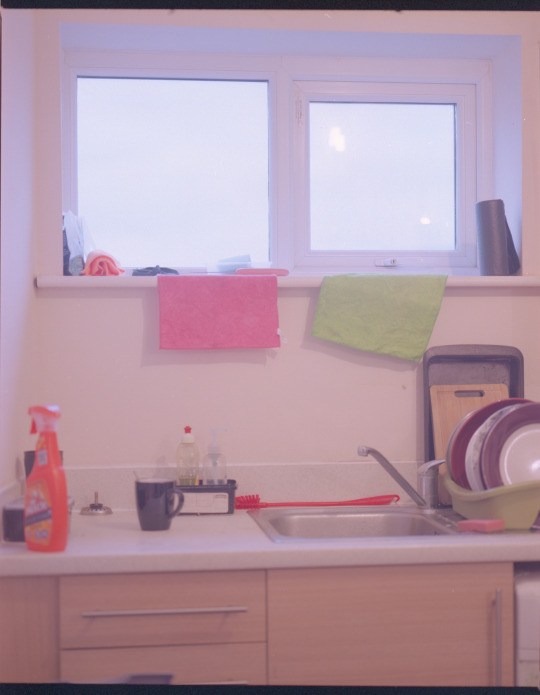
Tutorial Record
-Who?= With a small group
-Date, location and module title= 27/01/20- Degree Major Project
-What was the aim of the tutorial?=
To introduce Luke to the project and get a review on the work through my current selection of images
Using a brief 'artist statement' on the project, explain to Luke about the project
From the statement, try to get it the message across to the images
Work on the collection of images, sequencing?
-What were the main points covered?=
Introduced him to the project- Straight to the point
Artist Statement made the project strong and relevant
Striking, emotive photographs that were relevant to the project
Cohesive, flow of the work / images
Personal, yet relatable
-Were there any contextual references or recommendations mentioned?=
Sequencing= Work on tighter edits
Rough Edits / Refine Edits of the work
Mix of landscape and portraits that help tell the story
-Any actions to come out of tutorial?=
Sequencing
Write more
Experiment more with colour, b&w, polaroids, etc
0 notes